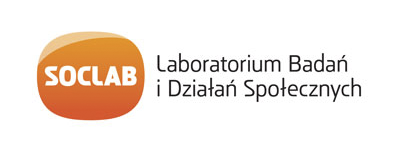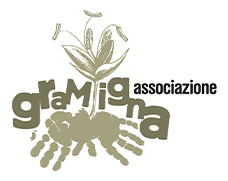EURECA
Buone Pratiche
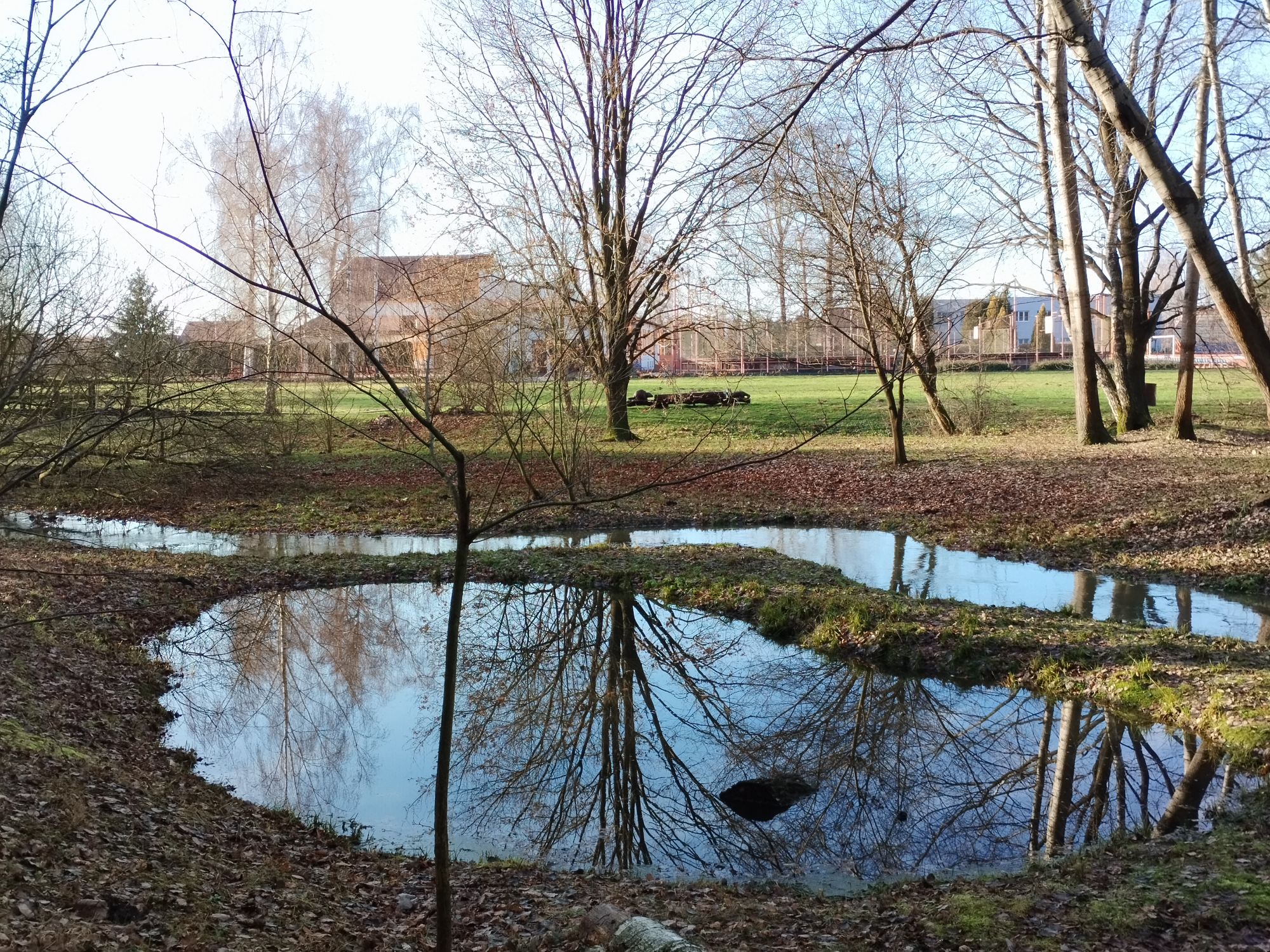
Rivitalizzazione del flusso d’acqua del fiume Bukovka a Živanice
Paese:Descrizione:
Lo scopo della Repubblica Ceca nel suo "Piano d'azione nazionale" è quello di migliorare la gestione dell'acqua per mantenere l'acqua del territorio in natura, in modo da poter correggere gli errori del passato, quando l'obiettivo principale era un drenaggio rapido grazie ad un sistema di drenaggio su larga scala per preparare i terreni agricoli per la produzione intensiva. In questo modo si verificava un'enorme perdita d'acqua, circa 10 milioni di m3 all'anno nel paesaggio.
La rivitalizzazione dei corsi d'acqua è un processo di rettifica delle alterazioni eseguite in modo improprio (controllo del flusso) rispetto allo stato originario e vicino alla natura al fine di ripristinare la funzione naturale degli ecosistemi acquatici. La naturalizzazione dei corsi d'acqua e delle inondazioni sia in aperta campagna che nei centri abitati coniuga interessi ambientali e di gestione delle acque. Nella maggior parte delle situazioni, non solo comporta un ripristino ecologico, ma aiuta anche a risparmiare acqua nel paesaggio per i periodi di siccità, mitigando al tempo stesso la formazione e il corso delle inondazioni.
La rivitalizzazione come naturalizzazione del corso d'acqua e delle inondazioni mediante misure edilizie, solitamente di carattere di investimento, viene effettuata sulla base di un progetto adeguato elaborato da una persona autorizzata ai lavori idraulici e dopo un'adeguata consultazione sull'acqua. Il progetto di rivitalizzazione si basa sulla conoscenza della morfologia fluviale e del relativo andamento fluviale (tipologia idromorfologica) e mira a progettare le forme e le dimensioni del corso d'acqua corrispondenti a tale tipologia. Si avvale solitamente di analisi idromorfologiche e idriche, sempre basate su una valutazione naturalistica dello spazio affrontato. Inoltre, il progetto si basa sulla migliore conoscenza possibile del percorso storico di un dato tratto di corso d'acqua e si avvale di confronti con tratti simili dello stesso o simile corso d'acqua che non hanno subito modifiche tecniche in passato.
La Repubblica Ceca dispone di una rete pianificata per la rivitalizzazione dei fiumi e dei torrenti. Nella nostra regione, la rivitalizzazione del corso d'acqua chiamato “Bukovka” è un intervento paesaggistico davvero impressionante. Su iniziativa del comune di Živanice, il ruscello "Bukovka" dovrebbe essere restituito alla sua forma naturale e costruire su di esso sette piccole piscine (tre di loro possono scorrere) e alcune zone umide come obiettivo principale della rivitalizzazione.
In passato il corso d'acqua naturale della Bukovka veniva raddrizzato e riempito con materiale cementizio che non permette all'acqua di assorbire l'acqua nel terreno.
L'obiettivo prioritario di questa rivitalizzazione del flusso d'acqua era quello di riportare il corso d'acqua alle sue condizioni storiche e naturali e quindi aumentare la ritenzione idrica. Uno dei principali fattori che migliorano la ritenzione idrica nel paesaggio sono soprattutto i boschi di alta qualità e la vegetazione fitta e continua. L'irruvidimento del fondo del torrente e le sue increspature, cioè l'allungamento e l'attenuazione dell'inclinazione longitudinale della sponda, hanno rallentato il flusso dell'acqua e quindi prolungato il tempo di scorrimento dell'acqua in questo tratto. Nei meandri l'acqua, rallentata, riesce a penetrare meglio nei terreni circostanti e a creare zone umide e stagni nelle depressioni adiacenti.
Inoltre il materiale concreto utilizzato per fortificare un piccolo ruscello è idraulicamente liscio. Dal punto di vista dell'autodepurazione dell'acqua, questo è un fenomeno negativo. Il fondo ricoperto di pietre ha una superficie attiva, alta una volta e mezza, parecchie volte più alta. Quindi l'effetto di autodepurazione è migliore e dipende dal tempo di contatto dell'acqua con la superficie della sezione.
Nell'ambito di questa azione di rivitalizzazione, una parte trascurata della comunità è stata migliorata e le persone vi trovano un bel posto per il loro relax.
Comunicati stampa
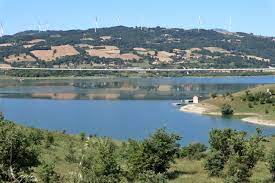
Oasi del Lago di Conza - Area di interesse scientifico del WWF
Paese:Descrizione:
Il World Wide Fund for Nature (WWF) è stato fondato nel 1961 e il suo obiettivo principale è la conservazione della biodiversità e la promozione di pratiche sostenibili per preservare l'ambiente.
In Italia il WWF è attivo dal 1966 e il Sistema delle Oasi WWF è stato istituito nel 1967. Le Oasi sono un sistema complesso e articolato di aree protette gestite da un'associazione privata, tra le prime in Europa. Sono luoghi dedicati alla conservazione del territorio e della biodiversità, ma anche spazi per educare i cittadini ai valori e all'importanza della conservazione. L'organizzazione opera per la conservazione della natura e la promozione dello sviluppo sostenibile nel contesto italiano, per la tutela dell'ambiente e la salvaguardia della biodiversità.
L'Oasi WWF "Lago di Conza" corrisponde al Lago di Conza, che copre un'area di 800 ettari ed è una delle zone più rilevanti delle regioni interne del sud dal punto di vista naturalistico. Il lago è artificiale e raggiunge una profondità di 30 metri. La sua costruzione è iniziata nel 1972, dando vita a una diga che consente l'accumulo di acqua dal fiume Ofanto per scopi irrigui. La diga è operativa dal 1992, con un bacino di 252 km² e un serbatoio di 63 milioni di m³ d'acqua. Il bacino ha molteplici scopi, tra cui l'irrigazione e, dal 2013, la fornitura di acqua potabile. Il fiume Ofanto, che nasce tra Nusco e Torella dei Lombardi e sfocia nel Mare Adriatico, alimenta con le sue acque la diga di Conza della Campania.
Designata come Oasi del WWF nel 1999, l'area riveste un'importanza nazionale e internazionale per la varietà di avifauna che nidifica o si stabilisce durante le lunghe migrazioni tra il continente africano e l'Europa. Riconosciuta come Oasi di Protezione della Fauna dall'Unione Europea, è una Zona Speciale di Conservazione (ZSC) e una Zona di Protezione Speciale (ZPS), che ospita specie animali e habitat naturali a rischio. In quanto Zona di Protezione Speciale, funge da rifugio per molti mammiferi in declino, come tassi, volpi e le ormai rare lontre. L'area ospita la più importante colonia di aironi dell'Italia meridionale. L'Oasi WWF del Lago di Conza è un crocevia cruciale per le migrazioni, che vedono il passaggio di diversi uccelli durante la primavera e l'autunno, tra cui gru, rapaci, cicogne e anatre.
La flora dell'area comprende numerose specie vegetali che hanno colonizzato ambienti diversi nel corso del tempo. Alcune, considerate "erbacce", svolgono un ruolo fondamentale nella tutela della biodiversità. L'avifauna è ricca, con circa 140 specie segnalate, comprese quelle nidificanti e migratorie. La pesca è consentita tutto l'anno con una licenza governativa, ma l'accesso alla diga è limitato.
Gestita dal dottor Marcello Giannotti, l'Oasi conduce laboratori e iniziative come "Tradizional-Mente", incentrati sulla tutela della biodiversità e sulle pratiche agricole tradizionali. L'Oasi offre anche visite guidate, laboratori di educazione ambientale per le scuole e vari programmi come l'area faunistica per le anatre e le escursioni in canoa sul lago.
L'Oasi è accessibile a tutti e presenta due percorsi: il Sentiero Natura, una passeggiata naturalistica con uno stagno artificiale e un punto panoramico con finalità didattiche, che rappresenta un habitat vitale per le specie palustri. Il Sentiero della Cicogna Bianca conduce alle aree faunistiche e all'antico frutteto con sei varietà di mele tipiche della zona.
L'impegno del WWF mira a incrementare le attività nelle Oasi, a migliorarne la fruibilità (anche virtuale), a organizzare e partecipare a conferenze ed eventi pubblici, a produrre osservazioni e documenti sui progetti, a partecipare a comitati e consigli, a realizzare eventi e campagne di divulgazione, a fare segnalazioni di reati ambientali e a fornire formazione agli adulti in materia di educazione ambientale.
In sintesi, l'Oasi WWF del Lago di Conza funge da area di conservazione vitale con flora e fauna diverse, contribuendo all'educazione ambientale e alle pratiche sostenibili in Italia.
Comunicati stampa
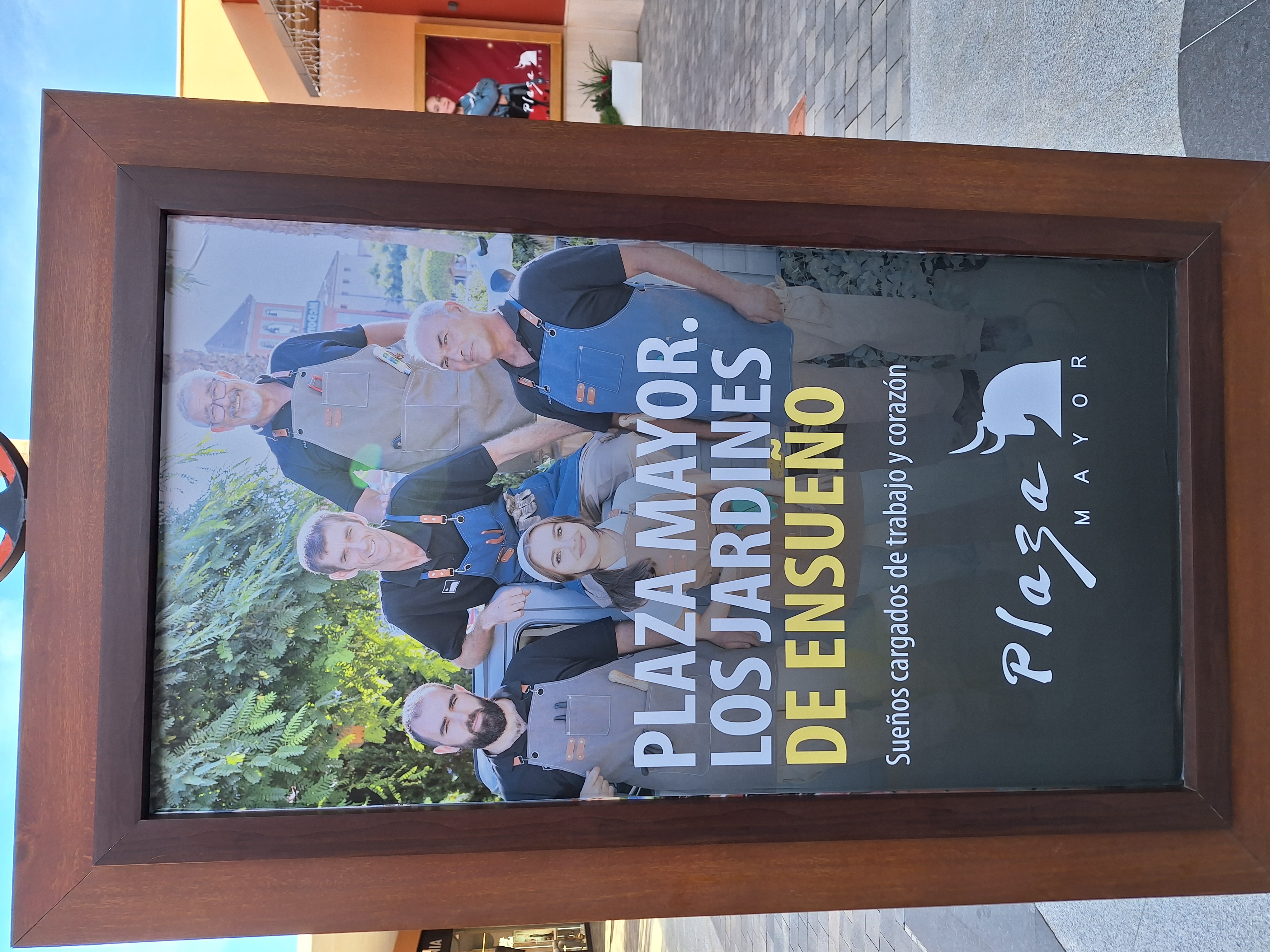
PLAZA MAYOR. Giardini sostenibili nel più grande centro commerciale di Malaga.
Paese:Descrizione:
Plaza Mayor è un enorme centro commerciale con più di 155 negozi e un gran numero di ristoranti situato a pochi minuti da Malaga.
L'azienda che lo gestisce, Sonae Sierra, sempre alla ricerca di soluzioni innovative ed esperienze differenzianti nei suoi centri, abbraccia la sostenibilità come valore fondamentale della sua filosofia.
I giardini di Plaza Mayor sono un chiaro esempio di questo impegno, poiché sono sostenibili e rispettosi dell'ambiente.
Questo impegno per avere giardini sostenibili è iniziato nel 2010. Da allora sono state portate avanti diverse azioni che hanno dimostrato che anche destinando meno risorse è possibile avere un giardino più spettacolare.
Il primo passo è stato la riprogettazione del giardino, riducendo la superficie del prato e introducendo piante autoctone.
Cinque anni dopo si optò per tecniche di disinfestazione biologica, utili a liberare gli insetti utili e a ridurre l’uso di prodotti fitosanitari chimici.
Nel 2016 la biodiversità e l’attrattiva sono state aumentate grazie all’introduzione di una colonia di farfalle monarca che ora è diventata stabile.
Nel 2019 hanno optato per uno stile naturalistico per il giardino, introducendo specie autoctone e mediterranee, nonché specie adattate alle condizioni dell'ambiente, con le quali sono riusciti a ridurre notevolmente l'uso di acqua e risorse pur continuando ad aumentare la biodiversità del giardino.
Negli ultimi anni questa biodiversità è stata promossa con diverse azioni rivolte alla piccola fauna come l'installazione di ricoveri per uccelli, pozze d'acqua, che facilitano la sopravvivenza di piccoli mammiferi e rettili, e alberghi per insetti, costruzioni che forniscono cibo agli insetti utili e fateli sistemare nel giardino.
Tutte queste iniziative hanno reso i giardini di Plaza Mayor un vero e proprio ecosistema dove è molto facile vedere una grande varietà di uccelli, diversi rettili, farfalle e piccoli mammiferi, come i ricci e persino i conigli.
Questo approccio ecologico, naturale e sostenibile va di pari passo con un alto livello tecnologico. Irrigazione computerizzata, con stazione meteo e sonde di umidità in base alle esigenze idriche del giardino.
Tutte queste misure si sono concentrate sul rispetto dei cicli naturali e hanno permesso all'ecosistema di funzionare in modo naturale ed equilibrato.
In questo progetto inquadrato nella filosofia Kaizen del miglioramento continuo, la visione del futuro comprende l'impegno a contribuire a promuovere questa ricchezza naturale, ampliando la fauna con specie che regolano questo ecosistema e ne aumentano la bellezza come pipistrelli o pavoni e offrendo agli visitatore un'esperienza differenziante con attività di educazione ambientale come visite guidate per chi ne fa richiesta oppure un percorso in cui i visitatori possono partecipare ad alcune azioni didattico-giocose utili per avere informazioni sulle diverse specie presenti al suo interno godendo della bellezza del giardino.
Comunicati stampa
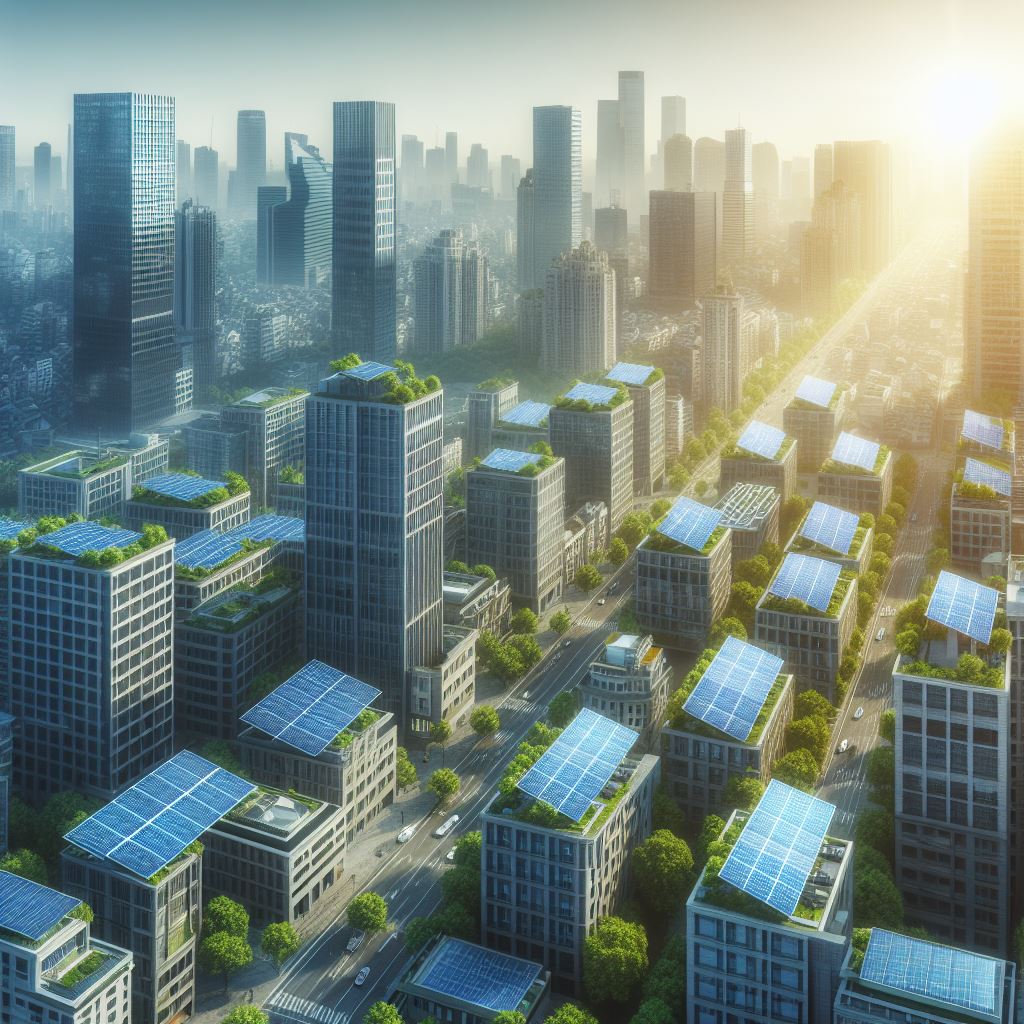
Comunità Energetica e Solidale di Napoli Est
Paese:San Giovanni a Teduccio, un quartiere periferico di Napoli caratterizzato da forti criticità ambientali e socioeconomiche: un quartiere periferico afflitto da problemi legati alla camorra, inquinamento ambientale dovuto a impianti chimici abbandonati, un'area in fase di bonifica a causa degli alti livelli di inquinamento, mare non balneabile per la mancanza di impianti di depurazione e alti livelli di povertà.
È proprio in questa periferia che è nata la prima comunità energetica solidale. La costituzione della "Comunità energetica e solidale di Napoli Est", creata da Legambiente Campania, coinvolge attualmente 20 nuclei familiari e punta a raddoppiare entro l'anno.
La formazione di una comunità di interesse composta da 20 famiglie ha portato alla creazione della Comunità Energia e Solidarietà di Napoli Est.
Un gruppo di esperti ha monitorato i consumi energetici delle 20 famiglie, creando un "rendering delle spese familiari". L'analisi è iniziata con l'identificazione degli sprechi e la gestione delle spese energetiche della famiglia.
La Fondazione Famiglia di Maria, un'organizzazione che opera nel quartiere con progetti educativi per minori, ha messo a disposizione il tetto della sua sede - un ex orfanotrofio del 1800 - avviando la transizione ecologica dal basso.
Grazie agli incentivi statali, sono stati installati 166 pannelli solari e collegati a una nuova centrale elettrica che condivide l'energia tra le 20 famiglie partecipanti. I pannelli solari alimenteranno una stazione appositamente costruita per essere utilizzata dalle venti famiglie del progetto.
I pannelli della comunità energetica e solidale di Napoli Est sono stati "accesi" il 17 dicembre 2021, producendo 53 kW per le prime venti famiglie del quartiere. Il progetto mira a coinvolgere almeno quaranta appartamenti, come spiega Legambiente Campania.
Queste famiglie sono in condizioni di povertà assoluta o quasi e spesso vivono in condizioni di "illegalità energetica". Iscriverle alla comunità energetica e sociale significa permettere loro di collegarsi alla rete energetica pubblica e legale, rendendole agenti attivi nel cambiamento della mentalità culturale del quartiere.
Perché la Comunità energetica di Napoli Est è importante? Perché unisce aspetti ambientali e sociali. La comunità energetica abbraccia l'innovazione e il sostegno sociale alla popolazione, perché i risparmi derivanti dall'uso di fonti rinnovabili aiutano direttamente le famiglie.
Un punto importante sottolineato è che devono essere le comunità e i quartieri a cambiare i modelli di produzione energetica legati ai combustibili fossili, guidando la transizione ecologica.
Le risorse energetiche comunitarie (CER), come definite nella legge del febbraio 2020 (L. 28/2020), sono entità giuridiche autonome formate da membri/utenti situati in prossimità dell'impianto di produzione di energia rinnovabile. Condividono e mettono in rete l'energia rinnovabile.
L'energia prelevata dai membri della comunità attraverso i dispositivi installati nelle loro case è considerata "energia condivisa" e quindi incentivata. Nell'arco dei 25 anni di garanzia dei moduli fotovoltaici, il totale degli incentivi ricevuti, al netto delle spese di gestione, ammonterebbe a oltre 200.000 euro. Si stima inoltre un risparmio reale, in termini di minori consumi elettrici da parte di tutti i membri del CER, di circa 300.000 euro.
Contemporaneamente, è stato avviato un programma di formazione sui metodi di approvvigionamento delle energie rinnovabili e sul monitoraggio dei consumi elettrici e della qualità dell'edificio in termini di dissipazione del calore.
Comunicati stampa
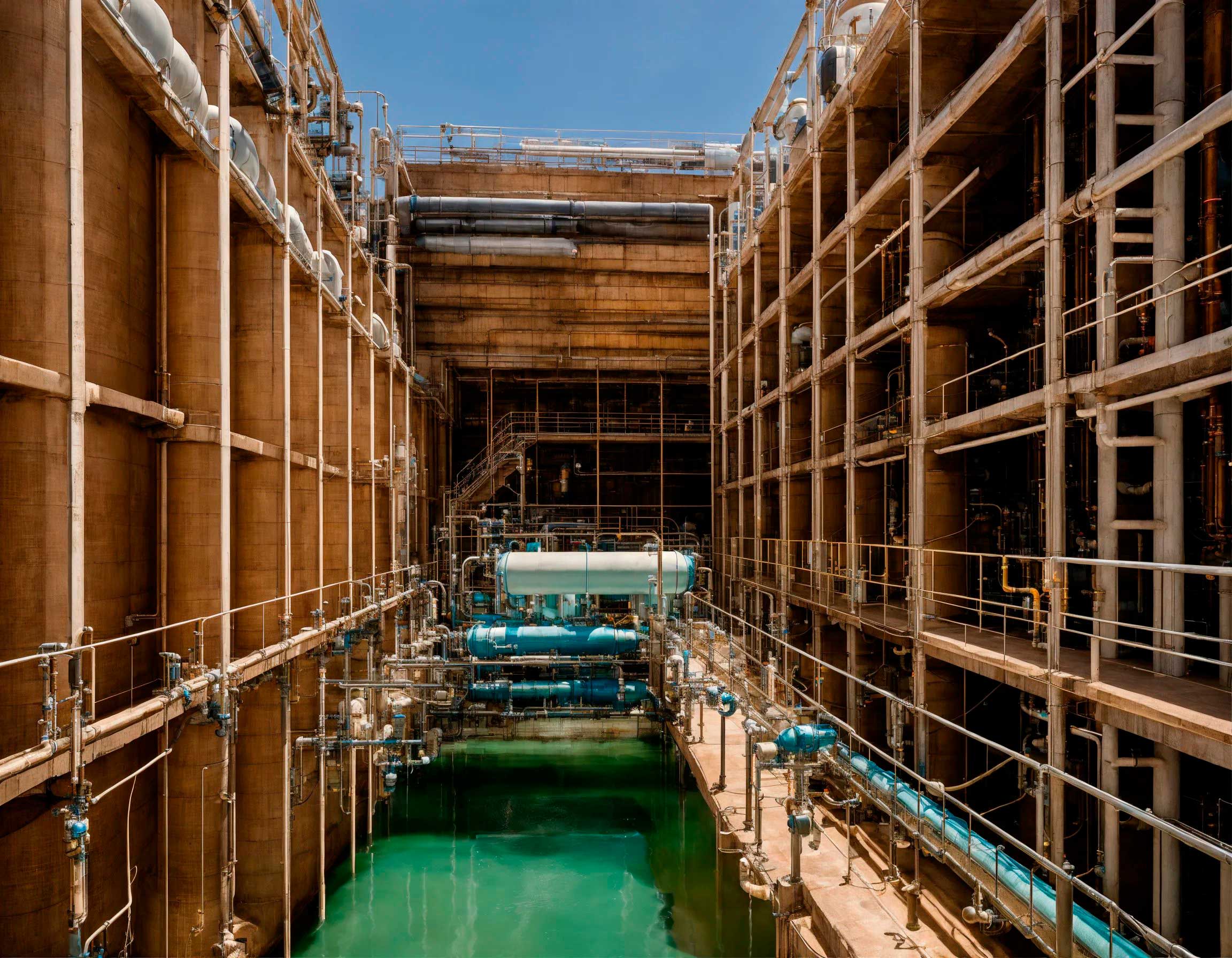
Impianto di desalinizzazione di Valencia: coltivare l'ecologia urbana attraverso soluzioni idriche sostenibili
Paese:Descrizione:
L'impianto di desalinizzazione di Valencia costituisce un notevole esempio di integrazione della tecnologia con considerazioni ecologiche. Valencia, essendo una città costiera con problemi periodici di scarsità d'acqua, ha implementato soluzioni innovative per garantire un approvvigionamento idrico sostenibile.
L'impianto di desalinizzazione di Valencia è strategicamente situato lungo la costa, consentendogli di sfruttare l'acqua di mare come fonte di desalinizzazione. Ciò riduce al minimo l’impatto sulle risorse di acqua dolce provenienti dalle aree interne e supporta il fabbisogno idrico urbano.
L’impianto incorpora tecnologie di desalinizzazione ad alta efficienza energetica, inclusa l’osmosi inversa, per convertire l’acqua di mare in acqua dolce. Questa attenzione all’efficienza energetica si allinea ai principi dell’ecologia urbana riducendo l’impronta di carbonio associata ai processi di trattamento delle acque.
Alcuni impianti di desalinizzazione in Spagna, compresi quelli di Valencia, hanno integrato l’uso di fonti energetiche rinnovabili nelle loro operazioni. Utilizzando l’energia solare o eolica, questi impianti contribuiscono agli obiettivi di ecologia urbana promuovendo pratiche sostenibili e riducendo la dipendenza dalle energie non rinnovabili.
Una corretta gestione della salamoia è fondamentale per prevenire impatti negativi sull’ambiente marino. L'impianto di desalinizzazione di Valencia utilizza metodi avanzati di smaltimento della salamoia, garantendo che la salamoia concentrata risultante dalla desalinizzazione sia gestita attentamente per ridurre al minimo i disturbi ecologici nell'ecosistema costiero.
L'acqua desalinizzata prodotta dall'impianto viene integrata nella rete idrica urbana, fornendo una fonte aggiuntiva e sostenibile di acqua dolce per la città. Questa integrazione aiuta a soddisfare la domanda idrica della popolazione urbana, allentando al tempo stesso la pressione sulle tradizionali fonti di acqua dolce.
Le continue iniziative di ricerca e monitoraggio sono parte integrante delle attività dell'impianto di desalinizzazione di Valencia. Le valutazioni dell'impatto ambientale e gli studi sugli effetti della pianta sugli ecosistemi locali contribuiscono al miglioramento continuo delle pratiche di desalinizzazione con l'obiettivo di ridurre al minimo i disagi ecologici.
Il progetto Valencia attribuisce importanza alla consapevolezza e al coinvolgimento della comunità. Educare la popolazione locale sui vantaggi e sulle sfide della tecnologia di desalinizzazione promuove un senso di responsabilità e gestione ambientale, in linea con i principi dell’ecologia urbana.
L’impianto di desalinizzazione di Valencia costituisce un esempio positivo di come la tecnologia di desalinizzazione possa essere implementata in modo da supportare il fabbisogno idrico urbano rispettando le considerazioni ecologiche in un ambiente urbano costiero.
Comunicati stampa
Adesivi per vetri anti collisione uccelli
Paese:Descrizione:
Circa 300 metri quadrati di pareti negli edifici del campus dell'Università di Białystok, in Polonia, sono stati protetti con una speciale pellicola UV, consentendo di ridurre il numero di collisioni degli uccelli con le superfici vetrate. L'iniziativa pionieristica, che implica un film UV innovativo, è stata resa possibile grazie alla collaborazione tra l'Università e i partner: la Fondazione polacca Glass Traps, l'organizzazione austriaca BirdShades e un'impresa di costruzioni locale.
Nell'architettura moderna le pareti di vetro, le grandi finestre e gli elementi decorativi riflettenti, a causa del comune aumento di queste caratteristiche, rappresentano una seria minaccia per gli uccelli.
"Sebbene accada che il vetro di una finestra o di una porta appena pulita sia così trasparente che non lo vediamo, il cervello umano, grazie a vari segnali come le maniglie delle porte o le ombre, può 'vederlo'. Allo stesso modo, distinguiamo il muro di una foresta dal suo riflesso nella facciata a specchio di un edificio. Gli uccelli vedono il mondo in modo leggermente diverso. Trattano il loro riflesso specchiato come un rivale, il riflesso di un gruppo di cespugli come la continuità dell'ambiente e gli elementi di vetro ombreggiati come. nascondigli L'effetto specchio o la trasparenza delle superfici vetrate rappresenta un enorme pericolo per gli uccelli, che li portano a scontrarsi," spiega il Dott. Krzysztof Deoniziak della Facoltà di Biologia dell'Università di Białystok.
"Quando, diversi anni fa, è stato sviluppato il progetto del nostro campus, questo aspetto della sua architettura non è stato preso in considerazione. Oggi sappiamo che alcuni muri dell'edificio dovrebbero essere messi in sicurezza per migliorare l'armonia con la natura, che è inerente al design del campus. Dobbiamo però farlo in modo da non interferire con l'intento artistico dei designer, preservando i valori visivi degli oggetti," commenta il prof. Robert Ciborowski, rettore dell'Università di Białystok.
La sfida era trovare un materiale per proteggere le superfici in vetro. Le pellicole protettive comuni sul mercato non sono del tutto trasparenti, spesso presentano un motivo visibile. Gli ornitologi hanno osservato che affinché un disegno sia efficace, deve essere posizionato densamente sul vetro in modo che l'uccello lo percepisca come impraticabile. La natura del motivo, siano essi punti, linee o sagome di rapaci, non ha importanza poiché non servono come deterrente ma piuttosto come elemento grafico.
La soluzione perfetta per l'utilizzo nel campus universitario si è rivelata un prodotto sviluppato dall'organizzazione austriaca BirdShades, che da anni lavora per la protezione degli uccelli.
"La nostra pellicola, sviluppata da noi, è trasparente all'occhio umano ma contiene a intervalli regolari un disegno speciale. Questo disegno è attivo nella luce ultravioletta, che gli uccelli possono vedere. Ciò consente loro di percepire la superficie ricoperta dalla nostra pellicola come un ostacolo e navigarci intorno", spiega Dominique Waddoup di BirdShades.
Secondo la Glass Traps Foundation, che ha avviato questo progetto, si tratta di un progetto pionieristico soprattutto per le sue dimensioni. Non ci sono molti esempi in Polonia e in Europa di protezione di grandi superfici vetrate con pellicole protettive UV.
Tutti i partner dell'iniziativa concordano sul fatto che è necessaria anche un'educazione diffusa sui rischi di collisione degli uccelli con le superfici di vetro e sulle possibilità di prevenire tali incidenti.
Comunicati stampa
Camilla - food coop
Paese:Descrizione:
Camilla nasce da un percorso di progettazione di un “ gruppo di acquisto solidale” Alchemilla a Bologna, grazie all’incontro con Associazione Campi Aperti, che da anni organizza mercati in piazze pubbliche per agricoltori biologici.
L’esperienza dei mercati di piazza ha ispirato la nascita di Camilla, soprattutto per l'opportunità di stimolare la crescita di consumatori consapevoli, in contatto diretto con chi produce, e quindi consumatori attivi di un circuito che porta sugli scaffali prodotti freschi e di qualità
Per sviluppare questa idea di nuove modalità di consumo e partecipazione è nata l’idea di un “emporio di comunità” che si ispira all’esperienza di Park Slope a New York e Bees coop in Belgio, basato sull’idea del Consumo critico e consapevole.
Operativo dal 2019, Camilla riprende l’esempio della Park Slope Food Coop, nata a New York nel 1973 e che oggi conta oltre 16.000 soci. Da qualche anno, in Europa, sono sorte decine di nuove esperienze che si rifanno a quel modello, come La Louve di Parigi e la Bees Coop di Bruxelles. Questi numerosi esempi hanno ormai confermato la sostenibilità del modello.
Nel concreto, la sostenibilità economica è garantita dal numero dei soci e dal volume d’acquisto di ciascun socio. L’acquisto di gruppo riduce il prezzo di vendita dei prodotti, con vantaggio per tutte le persone che acquistano, ma senza togliere valore al lavoro necessario alla realizzazione dei prodotti. Ci si sostituisce all’intermediario della Grande Distribuzione Organizzata con il Gruppo di Acquisto.
Camilla è il primo esperimento italiano di Food Coop. Nel concreto è un’esperienza di consumo differente, più partecipata e consapevole, che si concretizza in quello che possiamo definire un supermercato autogestito da chi lo frequenta, e sulla responsabilizzazione del consumatore.
Camilla si basa sull’autogestione. Come? Partecipando attivamente alla selezione dei prodotti e poi auto gestendo l’approvvigionamento, la distribuzione e la vendita a scaffale. Per acquistare da Camilla, per regolamento, è necessario essere soci della cooperativa, e quindi supportare tutta l’attività. è necessario associarsi e mettere a disposizione della propria cooperativa 3 ore di tempo al mese per svolgere le attività di gestione dell’emporio. Sostenendosi grazie al lavoro volontario e quindi riducendo i costi del personale, Camilla riesce ad avere prezzi giusti per i produttori ma non alti per i soci.
l'Emporio vende soprattutto prodotti alimentari, da filiere biologiche e sostenibili (confezionati e sfusi, con progressivo inserimento di ortaggi e frutta freschi, formaggi, carne).
Tutti i prodotti presenti in emporio provengono da filiere biologiche, etiche e sostenibili. Il documento di riferimento per i prodotti alimentari sono le “Linee guida per la scelta dei produttori”, che definisce i requisiti specifici a seconda del tipo di prodotto. Il gruppo lavora costantemente ad un sistema di valutazione più ampio, che prevede la verifica della qualità dei produttori e del rispetto dei principi di Camilla.
La scelta dei prodotti all’interno di Camilla è intesa come uno strumento di tutela dei territori e di emancipazione delle comunitа, ed è affidata ad un gruppo di lavoro apposito, costituito da soci competenti.
I criteri fondamentali per la scelta dei prodotti sono: Produzioni agricole biologiche, biodinamiche o equivalenti, Sostenibilitа ambientale e sociale, Trasparenza nelle relazioni, Riduzione degli imballaggi, Nuovi insediamenti rurali, Autodeterminazione alimentare, Chilometro equo, Gradualitа e condivisione delle scelte, Trasformazioni contadine, Risparmio energetico, Sostegno a produttori in difficoltа, Nuove filiere, Diffusione prodotti sfusi.
Camilla promuove le filiere produttive corte e locali, e la conoscenza diretta dei produttori, nel segno di una relazione costruttiva e trasparente tra i soggetti coinvolti nella filiera, dalla produzione al consumo.
È il concetto di “scambio mutualistico” tra i soci e la cooperativa: ottimi prodotti a prezzi contenuti, in cambio di un turno di lavoro volontario per il funzionamento dell’emporio.
Oltre alla possibilitа di fare una spesa solidale, etica e sostenibile, le socie e i soci sono incoraggiati a partecipare attivamente ai vari aspetti della vita della cooperativa. I soci organizzano anche incontri di food letteratura: il focus sulle filiere etiche che contrastano caporalato e sfruttamento dei migranti, l'approfondimento sui sistemi di garanzia partecipata verso i produttori di cibo, l'incontro sulle filiere di produttori.
Dal 2019: in 56 sono partiti come soci fondatori, 475 sono i soci cooperatori allo stato attuale. Organizza incontri con i produttori, eventi aperti al pubblico, amplia con costanza la sua rete di fornitori, dimostrando che il modello dell’emporio di comunità può funzionare anche in Italia.
Comunicati stampa
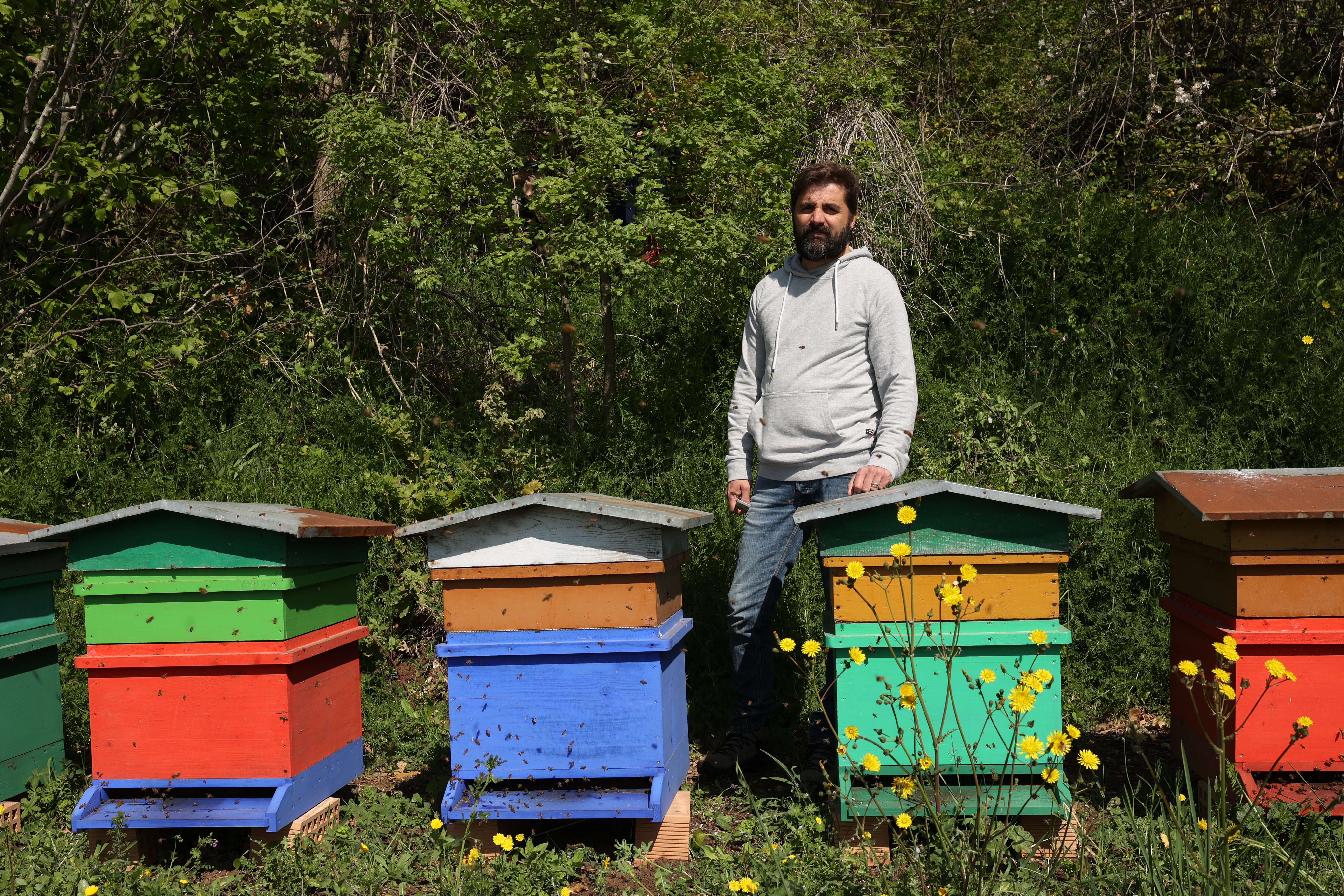
Cooperativa Lentamente
Paese:Descrizione:
La cooperativa agricola "Lentamente" è composta da un gruppo proveniente dalla provincia rurale di Benevento, nel sud Italia. Si tratta di un'area di emigrazione, con una media di oltre 5.000 persone che ogni anno cambiano residenza solo in questa provincia. Questa migrazione è determinata da alcune caratteristiche delle aree rurali, tra cui la mancanza di trasporti, la limitatezza dei servizi, la scarsità di posti di lavoro di qualità e la mancanza di opportunità di esperienze diverse. Queste persone hanno vissuto l'esperienza della migrazione e, dopo varie esperienze e anni trascorsi in altri luoghi, hanno deciso di tornare nella loro terra d'origine.
I membri sono tornati e hanno ampliato la visione dei loro territori d'origine, aprendosi a nuove interpretazioni: una terra meno contaminata dall'omogeneizzazione culturale industriale e, soprattutto, ricca di patrimonio culturale immateriale e di antichi saperi da preservare.
Il gruppo integra agricoltura e aspetti sociali, valorizzando le persone e il territorio, rispondendo ai bisogni di chi vive in quest'area, utilizzando il lavoro sul campo e il cibo come strumenti di integrazione e sviluppo. Si concentra sulla ricerca di pratiche agricole alternative senza l'uso di composti chimici (fertilizzanti, pesticidi, erbicidi, ecc.), di metodi di coltivazione invasivi e di eccessivo sfruttamento del territorio.
L'obiettivo è coinvolgere gli individui svantaggiati, le persone con disabilità, sensibilizzando, informando le famiglie e la società, integrando senza omogeneizzare o assimilare.
Non solo permettono ai partecipanti di costruire un percorso diverso per il loro futuro, ma contribuiscono anche ad azioni concrete che aggiungono valore al territorio.
Il gruppo Lentamente è riuscito a realizzare numerose attività e mira a diventare un vero e proprio polo di formazione e orientamento in campo agricolo, aiutando le vittime dello sfruttamento lavorativo. Il tutto seguendo corsi di formazione specializzati per le colture locali, come la potatura degli ulivi o della vite.
Lentamente ha ricevuto il Premio ILC nel 2022, un premio della Coalizione Internazionale della Terra, la più grande e completa alleanza che si occupa di diritti della terra, una vera e propria alleanza globale di società civile, organizzazioni di agricoltori e agenzie delle Nazioni Unite.
Produce grano, farina, verdure fresche, legumi, miele, crema di nocciole, pasta e salsa di pomodoro. Dispone di un laboratorio di trasformazione e di un laboratorio di confezionamento del miele e attualmente gestisce diversi ettari di terreno dove produce anche olio d'oliva e vino.
Comunicati stampa
.jpg)
Produzione di energia dai rifiuti urbani
Paese:Descrizione:
I rifiuti urbani di Lisbona e di altri 18 comuni della regione vengono trattati e recuperati attraverso un sistema integrato, che produce elettricità e materiali vari. Il sistema è gestito da una società a capitale privato e pubblico, denominata Valorsul.
L'unità principale di produzione di elettricità incenerisce i rifiuti solidi urbani indifferenziati, ad una temperatura di 900 gradi Celsius, in tre inceneritori, ciascuno con la capacità di bruciare 28 tonnellate di rifiuti all'ora. Il calore proveniente dagli inceneritori viene trasformato in vapore acqueo che, attraverso un turbogeneratore, produce energia elettrica.
Ogni tonnellata di rifiuti bruciati genera 587 kWh di elettricità, di cui 89 kWh vengono consumati per il funzionamento del sistema. L'energia rimanente viene immessa nella rete elettrica nazionale. Situata a S. João da Talha, questa unità riceve ogni giorno circa 1000 tonnellate di rifiuti solidi indifferenziati, che vengono trasformati in energia sufficiente a rifornire una città di 150mila abitanti.
Ogni tonnellata di rifiuti bruciati produce inoltre circa 200 kg di scorie, che vengono separate. Quelli metallici vengono riciclati per essere trasformati in materia prima. Gli altri sono sottoposti ad un processo di maturazione, che dà come risultato un aggregato artificiale utilizzato dall'ingegneria civile, soprattutto nella costruzione di strade, in sostituzione dei materiali naturali. Questo prodotto ha la certificazione del marchio CE.
Valorsul produce energia elettrica in altre due unità, bruciando biogas generato dalla fermentazione dei rifiuti biodegradabili attraverso il processo di “digestione anaerobica” (trattamento in ambiente chiuso e assenza di ossigeno). Queste unità producono anche un composto organico da utilizzare nel giardinaggio, negli spazi verdi e nelle colture agricole arboree e arbustive.
La produzione media annua di energia elettrica delle tre unità Valorsul è di 350 GWh. Questo valore è ottenuto dalla raccolta indifferenziata dei rifiuti domestici prodotti da 1,6 milioni di abitanti dell'area di intervento dell'azienda, che equivale solo al 20% di tutti i rifiuti domestici prodotti nell'intero Paese. Ciò significa che in Portogallo la produzione di energia elettrica dai rifiuti urbani ha un grande potenziale di crescita.
Comunicati stampa
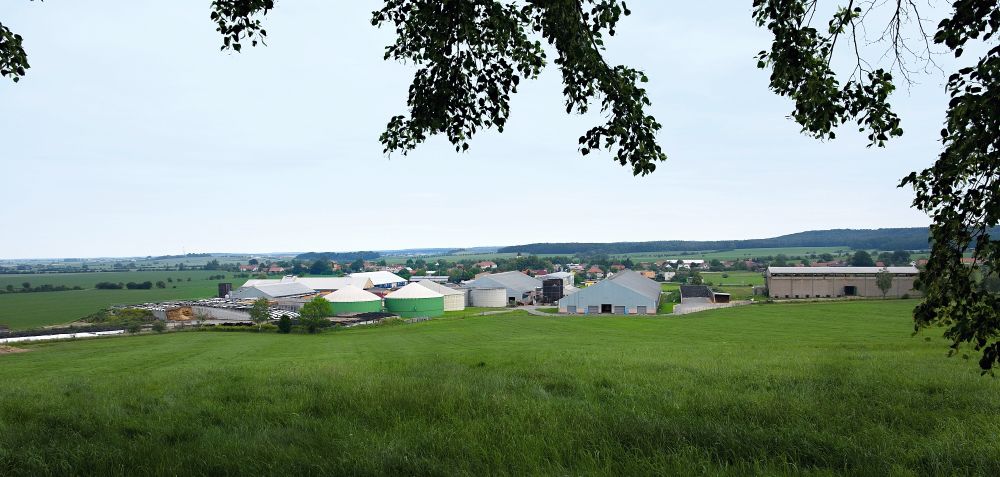
Fonte alternativa di energia – Distributore di biogas a Ostřetín
Paese:Descrizione:
Le stazioni di biogas (BPS) sono attualmente uno dei tipi base di fonti di energia rinnovabile (FER). La fonte energetica in questo caso è il biogas ricco di energia prodotto da processi biochimici nella decomposizione anaerobica della materia organica. La materia prima può essere biomassa coltivata in modo efficiente, biomassa di rifiuti agricoli o rifiuti organici urbani.
La stazione di biogas è un ottimo sostituto dell’estrazione del gas naturale. È più rispettoso dell'ambiente poiché la produzione non genera rifiuti che mettono a dura prova la natura.
In una stazione di biogas, un processo di fermentazione controllata converte la biomassa umida in biogas. Il suo utilizzo è particolarmente diffuso nelle cooperative agricole, poiché in esso possono essere lavorate in modo molto efficiente le feci liquide e solide del bestiame, così come ad esempio l'insilato. Il prodotto risultante dalle stazioni di biogas è l'elettricità che viene fornita alla rete energetica e il calore, ininterrottamente durante tutto l'anno. Il calore può essere utilizzato, ad esempio, per il riscaldamento di case familiari, per il riscaldamento dell'acqua, per l'essiccazione di prodotti agricoli, ecc.
Secondo l'Associazione ceca del biogas, alla fine del 2013 nella Repubblica Ceca sono state installate 481 stazioni di biogas con una capacità installata totale di 363,24 MW e una quota di energia prodotta dall'ONS del 20,7%, ovvero circa il 2,5% dell'elettricità totale. produzione nella Repubblica Ceca.
A differenza degli impianti eolici o solari, il BPS appartiene alle fonti rinnovabili regolamentate. Il biogas può essere immagazzinato e l’energia può essere generata anche in caso di condizioni meteorologiche avverse o inferiori alla norma. Durante il loro funzionamento non vengono generate sostanze di scarto, mentre il BPS può trattare i rifiuti per generare energia elettrica e termica e contribuire così al recupero dei rifiuti biodegradabili in una determinata regione.
La stazione di biogas nel villaggio di Ostřetín ha una potenza elettrica di 844 kW e viene utilizzata per la lavorazione delle eccedenze della produzione agricola.
Questa stazione è composta da tre componenti. In un luogo preparatorio vengono preparati e rimescolati gli escrementi bovini, i liquami, il letame, la biomassa proveniente dai campi e l'insilato. Il cuore della stazione di biogas sono due fermenti, dove viene prodotto il biogas, e un serbatoio di putrefazione. L'ultima parte è il motore, dove viene bruciato il gas, e il generatore, che produce la corrente elettrica. Tutti i materiali in ingresso, come le fonti energetiche rinnovabili, sono sottoposti a fermentazione anaerobica nel reattore, il cui prodotto è biogas adatto alla combustione in un'unità di cogenerazione. L'output dell'unità di cogenerazione è energia elettrica, che esce attraverso la stazione di trasformazione nella rete energetica pubblica degli impianti di distribuzione e calore, una parte del quale viene utilizzata per riscaldare i fermenti. Il restante prodotto della biomassa può essere utilizzato come fertilizzante per la produzione agricola. Il resto del calore viene utilizzato per riscaldare oggetti nell'area agricola e nelle attività vicine, come un servizio auto, un essiccatoio per il legno, ecc. Il progetto è unico anche in quanto il calore di scarto viene utilizzato anche per riscaldare l'acqua nella produzione della cooperativa agricola e per i suoi dipendenti. Questa stazione di biogas è stata sostenuta finanziariamente dall'Unione Europea.
In generale, il funzionamento delle stazioni di biogas fornisce un notevole impulso all’agricoltura nelle zone rurali. Inoltre, apportano anche nuove opportunità di lavoro, portano alla riduzione dei gas serra e possono fornire calore in modo adeguato alle case o alle aziende vicine. Pertanto, la produttività del biogas è sia ecologica che economica.
Comunicati stampa

Limitare la carne nelle mense scolastiche.
Paese:Descrizione:
L'attuale mondo del consumo dilagante, del consumo eccessivo e della sovrabbondanza di tutto nei paesi ricchi del "nord del mondo" sta causando un enorme impatto sull'ambiente. Il problema non sono solo i rifiuti ma anche, e forse soprattutto, il modo in cui vengono prodotti. Uno dei prodotti la cui produzione ha il maggiore impatto sull’ambiente è la carne. L’allevamento di animali da carne, così come la lavorazione della carne, consumano enormi quantità di acqua ed energia, mentre gli escrementi animali sono fonte di inquinamento del suolo, dell’acqua e dell’aria. Influiscono anche sul cambiamento climatico, poiché il metano rilasciato dagli escrementi animali è uno dei principali gas serra. Enormi aree di foresta vengono disboscate per il pascolo, comprese le foreste più preziose: quella equatoriale e quella amazzonica. Il consumo di carne contribuisce ad aumentare le disuguaglianze nel Sud e nel Nord del mondo. Allo stesso tempo, il consumo eccessivo di carne nei paesi ricchi porta a molte malattie gravi. Una questione separata riguarda gli aspetti etici dell’allevamento e dell’uccisione degli animali.
Per allontanarsi da uno stile alimentare sfavorevole basato sulla carne, si stanno facendo molti sforzi per ridurre o abbandonare il consumo di carne. Ciò non è facile, soprattutto a causa delle abitudini umane e delle tradizioni culinarie. Un problema a parte è lo spreco alimentare. Spesso si frappongono ostacoli giuridici, ad esempio quando si dà da mangiare agli scolari. Ma ci sono anche buoni esempi di come affrontare questo problema.
Il comune polacco della città di Izebelin, ha raccolto la sfida dello spreco alimentare nelle scuole, dove è stato introdotto il buffet, così ogni bambino ne mette quanto vuole e ciò che gli piace di più, così non ci sono avanzi il piatto da un menu andato storto. Puoi anche portare gli avanzi in contenitori compostabili. Inoltre, tre giorni alla settimana sono a dieta libera e la carne compare nei piatti degli alunni solo il martedì e il giovedì. Inoltre, nelle unità comuni sono vietati gli imballaggi e le posate usa e getta non biologici. In collaborazione con una ONG sono stati lanciati punti di condivisione del cibo, accompagnati dalla pubblicazione di una brochure "La cucina degli emarginati" e da laboratori di cucina a spreco zero.
"Il nostro menù quotidiano è importante per il bene dell'ambiente e per la lotta al cambiamento climatico" sottolinea Dorota Zmarzlak – il sindaco, che non è vegetariana ed è lontana da ogni tipo di estremismo, ma come dice lei – è abbastanza
Comunicati stampa
.jpg)
Stabilimenti dell'acqua e piano generale di drenaggio di Lisbona
Paese:Descrizione:
Il verificarsi di inondazioni causate da precipitazioni estreme è diventato frequente a Lisbona, soprattutto nelle zone lungo i fiumi, a causa della crescente occupazione del territorio e dei cambiamenti climatici.
Il Lisbon Drainage Master Plan (LDMP) mira a proteggere la città dai grandi flussi di acqua piovana, attraverso la costruzione – in corso fino al 2030 – di 6 km di tunnel, che fungono da collettori di pioggia, e sfrutta i trasferimenti idrici interbacini, mitigando gli effetti ambientali, economici e gli impatti sociali delle alluvioni.
Il LDMP prevede vasche antinquinamento che immagazzinano l'acqua di prima pioggia più inquinata a causa del contatto con i rifiuti depositati sui marciapiedi. L'acqua viene portata ai tre stabilimenti idrici della città per essere trattata. Uno dei bacini antinquinamento avrà un compartimento in grado successivamente di garantire un flusso minimo di acqua alimentando un impianto mini-idro che produrrà energia per alimentare lo stabilimento dell'acqua di Alcântara. Il LDMP prevede il rafforzamento e il ripristino della rete igienico-sanitaria esistente.
I tre stabilimenti dell'acqua di Lisbona (Alcântara, Beirolas e Chelas) trattano le acque reflue e piovane attraverso vari processi fisico-chimici e biologici per separare i solidi e rimuovere la materia organica, fosfati, nitrati e microrganismi patogeni. Parte di quest'acqua riciclata viene sottoposta alle radiazioni ultraviolette e utilizzata nell'irrigazione urbana, nel lavaggio delle pavimentazioni, nell'antincendio e nell'industria, attraverso un sistema di distribuzione con 55 km di condotte adduttrici. Un'altra parte viene restituita all'ecosistema acquatico, nel caso di Lisbona al fiume Tago, in condizioni di sicurezza ambientale.
Ma il potenziale di riutilizzo di quest’acqua è illimitato. Se sottoposto a trattamento di ozonizzazione e osmosi inversa, può essere utilizzato per il consumo umano, come già avviene a Lisbona, con la produzione della birra a marchio Vira.
Comunicati stampa
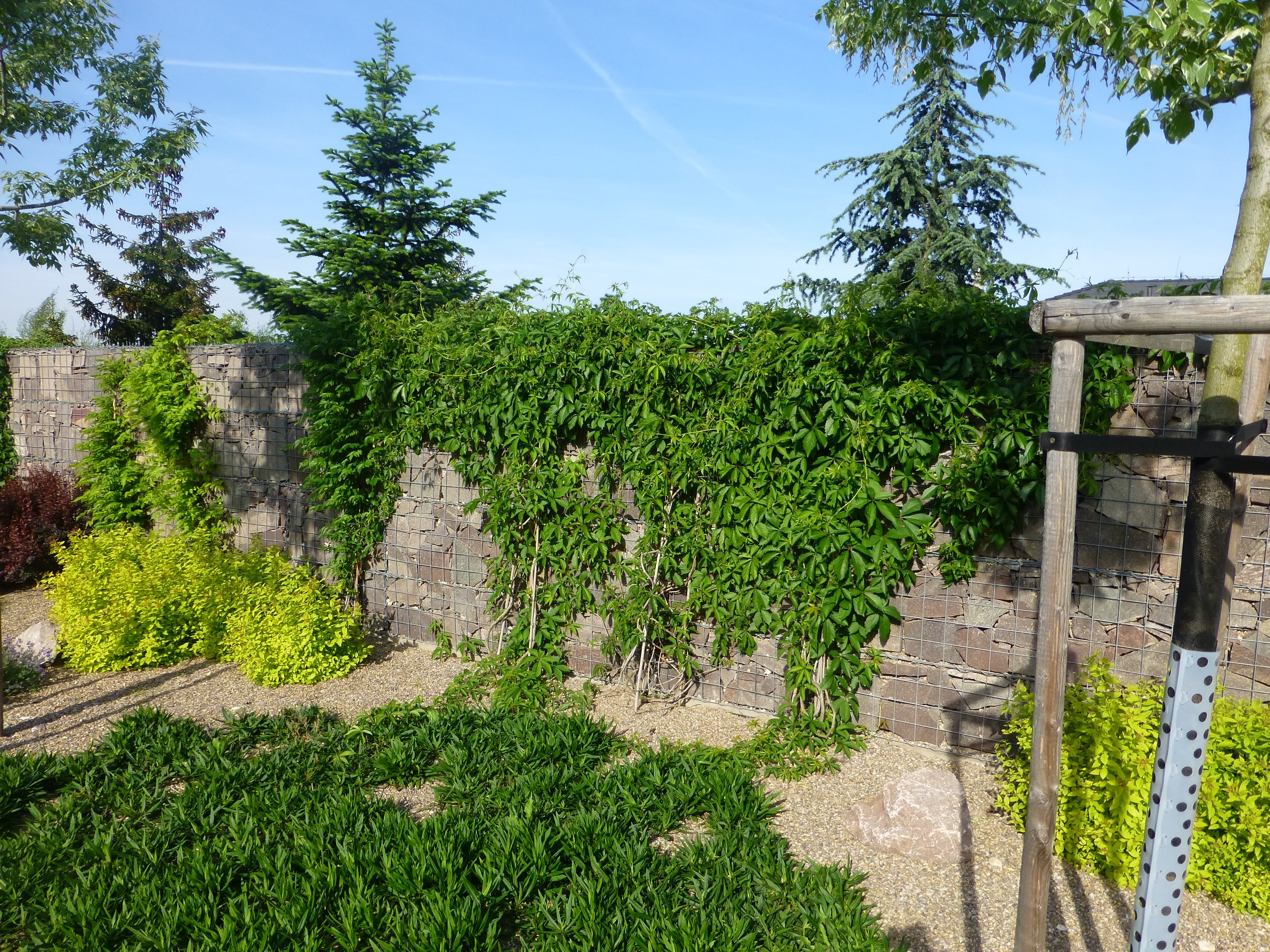
Muro protettivo a gabbioni in via Teplého, città di Pardubice – Dukla
Paese:Descrizione:
I gabbioni sono le strutture in filo metallico riempite di pietra naturale che venivano utilizzate in una costruzione fin dai tempi di Leonardo da Vinci.
Studi misurabili dimostrano che i gabbioni hanno un’impronta di carbonio inferiore dell’80% rispetto al calcestruzzo. Ciò è stato ottenuto grazie al processo di produzione rispettoso dell'ambiente e ai materiali con cui sono realizzati i gabbioni. I gabbioni contribuiscono alla sostenibilità a lungo termine dell’ambiente in diversi modi:
La riciclabilità al 100% dei gabbioni è la prova indubbia della loro elevata importanza ambientale per il nostro pianeta. L'acciaio utilizzato nella loro produzione è il materiale più riciclato al mondo. Oltre il 90% dell'acciaio usato viene riciclato per poter essere riutilizzato nella produzione di automobili, strutture edili, macchinari o imballaggi. In confronto, poco più del 30% di tutta la plastica prodotta nell’UE viene complessivamente riciclata. Il secondo e allo stesso tempo il componente strutturale più caratteristico dei gabbioni sono le pietre. I gabbioni soddisfano i criteri più severi per l'utilizzo dei materiali da costruzione in natura.
La durabilità a lungo termine
Nel mondo di oggi, l'aumento del traffico è una delle variabili che sta trasformando il nostro ambiente. L'utilizzo dei gabbioni permette alle radici delle piante di crescere sia dall'esterno che dall'interno, contribuendo allo stesso tempo a migliorarne la staticità. Le foglie di queste piante aiutano a ridurre la percentuale di carbonio nell'aria causata dai fumi di scarico delle auto. Forse la caratteristica più importante dei gabbioni è la loro durabilità a lungo termine, almeno 50 anni.
Il muro di protezione del gabbione: via Teplého, Pardubice – Dukla
Quando vengono costruiti i muri dei gabbioni, sotto le strutture dei gabbioni vengono costruite strisce di fondazione di ghiaia, che supportano la ritenzione idrica nell'ambiente urbano – qui formano "serbatoi" di acqua sotterranea per gli alberi circostanti - dopo le piogge più abbondanti, forniscono tempo per l'orizzonte del suolo per un migliore assorbimento delle precipitazioni. Insieme ai sentieri di ghiaia adiacenti, formano dei collettori di infiltrazione dai quali gli alberi e gli arbusti attingono l'acqua che altrimenti verrebbe trasferita dai deflussi superficiali alla rete fognaria cittadina.
I terrapieni delle pareti del gabbione sono per 2/3 in ghiaia, il che favorisce la stabilità delle pareti e allo stesso tempo aumenta la possibilità di infiltrazioni di pioggia. Nei terrapieni è stato utilizzato il materiale lapideo residuo e non idoneo alla messa in opera del gabbione (le pietre troppo grandi o troppo piccole). Allo stesso tempo, ciò ha sostenuto l’economia dell’edilizia e il tasso di non-rifiuti (nessuna rimozione del materiale in eccesso). Il passaggio attraverso il muro di gabbioni è reso possibile dai vicoli curvi in modo che il rumore della strada non possa passare direttamente – il muro è un ostacolo alla sua propagazione. Nessun albero è stato abbattuto durante la costruzione – grazie alla possibilità di costruire con i gabbioni, il muro è stato ondulato in modo da passare tra i singoli alberi e disturbare minimamente il loro apparato radicale. Nella foto, Acer saccharum, dove le radici sono state esposte con cura, è stata riempita la ghiaia sottostante, su cui è stato arcuato il muro senza danneggiare le radici di questo albero – 6 anni dopo la costruzione, l'albero è in buone condizioni. La parete è già completamente ricoperta da piante come Parthenocissus tricuspidata e Hedera helix in alcuni punti. Grazie al sottosuolo ghiaioso dei muri e dei vialetti in ghiaia, il verde ha sufficiente umidità anche nei mesi estivi secchi, quando i prati sono già in pessime condizioni. La struttura dei muri di gabbioni con una serie di giunti di dimensioni irregolari tra le pietre sostiene la biodiversità delle specie, creando rifugi per gli insetti e i piccoli vertebrati come le lucertole e gli uccelli.
Per aumentare la funzione acustica è possibile aggiungere un geotessile alla costruzione del gabbione. Un materiale più fine ha una maggiore capacità di assorbire il rumore della strada (minore riflettività e maggiore superficie). Allo stesso tempo, fornisce supporto alle piante rampicanti (Parthenocissus tricuspidata, Hedera helix, Campsis e Clematis, a crescita rapida appositamente piantate) che servono a rinfrescare l'ambiente nei mesi estivi. Le piante rampicanti per il verde, che contribuiscono all'effetto antirumore del muro e allo stesso tempo trattengono le polveri disperse nell'aria (PM10) dalla strada trafficata adiacente.
Comunicati stampa
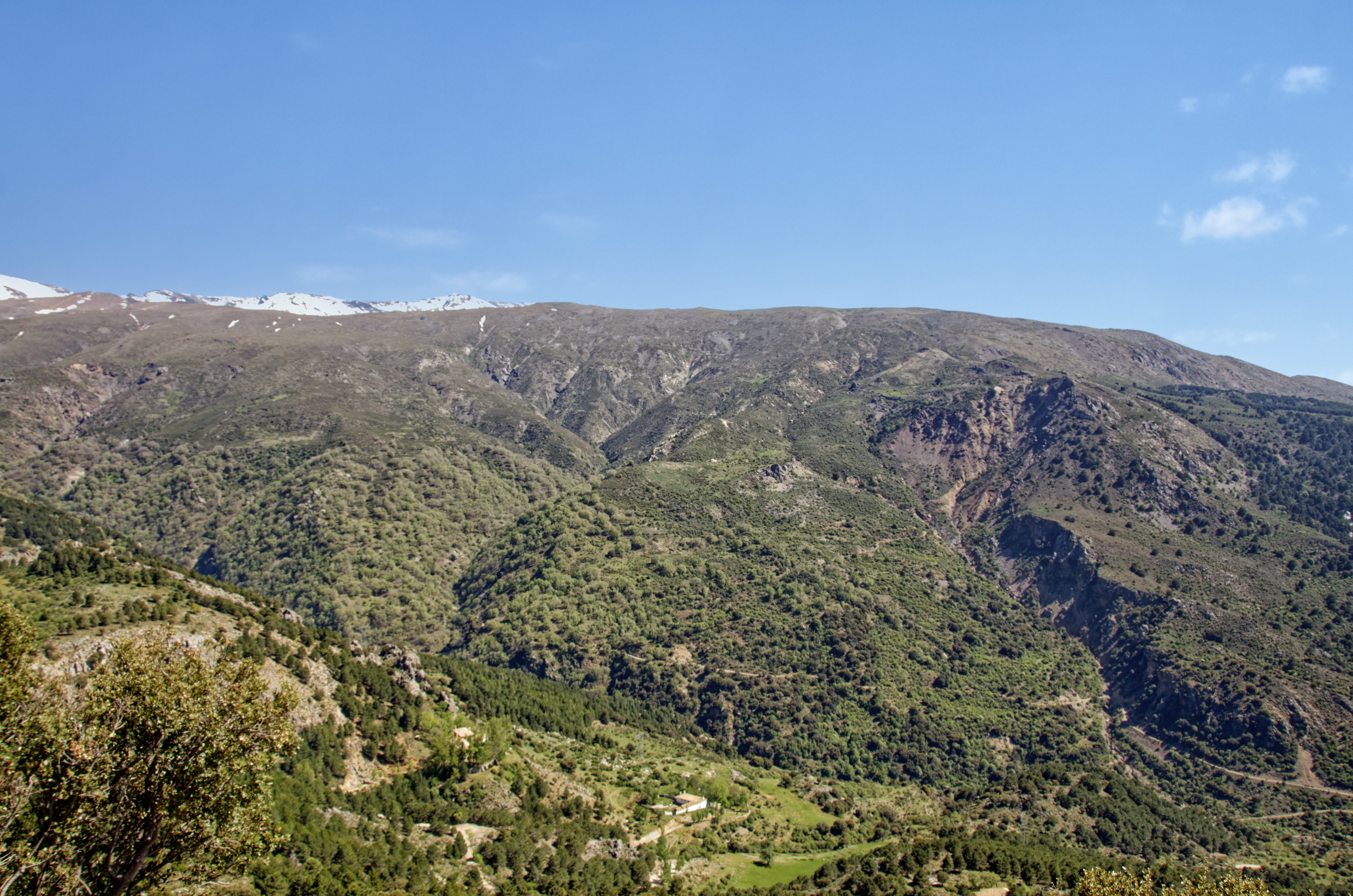
Programma "LIFE RedBosques"
Paese:Descrizione:
Le foreste svolgono un ruolo cruciale nella regione del Mediterraneo in quanto ecosistemi vitali, offrendo numerosi benefici alla società. Tuttavia, si trovano ad affrontare minacce significative, nonostante mantengano un elevato valore ambientale.
I recenti cambiamenti, attribuiti all’abbandono delle pratiche tradizionali e agli impatti dei cambiamenti climatici, richiedono lo sviluppo di approcci gestionali innovativi incentrati sulla preservazione dei servizi ecosistemici.
In Spagna, il programma "LIFE RedBosques" si concentra sul ripristino e sulla salvaguardia delle foreste autoctone, soprattutto all'interno delle aree protette. L’iniziativa mira a migliorare la salute e la resilienza degli ecosistemi forestali promuovendo al contempo la biodiversità.
L’obiettivo generale è garantire che i gestori delle foreste integrino efficacemente la conservazione della biodiversità e l’adattamento ai cambiamenti climatici nelle loro operazioni quotidiane.
Nello specifico, RedBosques mira a:
1. Stabilire scenari di base per valutare lo stato di conservazione delle foreste mediterranee.
2. Formulare criteri e strumenti per la progettazione e l’attuazione di pratiche di gestione forestale nelle foreste mediterranee Natura 2000, in linea con gli obiettivi relativi alla conservazione della biodiversità e all’adattamento ai cambiamenti climatici.
3. Diffondere conoscenze all’avanguardia al pubblico target e alle parti interessate.
Questo progetto prevede collaborazioni tra autorità ambientali, comunità locali e organizzazioni non governative. Le attività chiave includono la riforestazione utilizzando specie autoctone, il controllo delle specie invasive e l’attuazione di misure per prevenire e combattere gli incendi boschivi.
Inoltre, il programma integra campagne educative e di sensibilizzazione per coinvolgere il pubblico nelle pratiche di gestione sostenibile delle foreste.
Comunicati stampa
Prato fiorito nella città
Paese:Descrizione:
A Bialystok, in Polonia, a partire dal 2019. Il Consiglio comunale sta creando prati fioriti al posto dei prati tradizionali o lasciando le aree verdi non falciate. Tale misura ha una dimensione ecologica, estetica e sociale.
"Volevamo introdurre metodi moderni per mantenere il verde nelle corsie stradali - e allo stesso tempo rispettosi dell'ambiente: migliorare la biodiversità, mitigare gli effetti delle cosiddette isole di calore e migliorare localmente il microclima. Ovviamente anche abbellire la nostra città. Era importante scegliere la giusta composizione delle miscele di semi, nonché il periodo e l'intensità della fioritura e la resistenza alla siccità. Abbiamo anche cercato di rendere le piante attraenti per gli insetti in visita. Ci siamo preoccupati della micro ritenzione della pioggia e della pulizia dell'aria particelle nocive PM10 e PM2,5″ - afferma il dipendente del municipio di Bialystok responsabile del verde. Il vicesindaco aggiunge: "L'anno scorso, nel 2022, l'area dei prati fioriti di Bialystok occupava più di 8 ettari, quest'anno si espanderà di più di 2 ettari. Stiamo quindi superando l'obiettivo fissato all'inizio, ovvero 10 ettari di prati a Bialystok. Quest'anno saranno quasi 11 ettari. Stiamo inoltre aumentando a 50 ettari la superficie degli spazi verdi che non vengono falciati durante la stagione di crescita. L'anno scorso erano circa 36 ettari. Stiamo adottando queste e altre misure simili per il bene della biodiversità e della protezione ambientale di Bialystok."
I prati di Bialystok sono molto diversi e svolgono molte funzioni. Prati perenni multicolori occupano il 25% della superficie totale, prati perenni antismog - 6%, prati annuali adatti alle farfalle - 17%, prati annuali antismog - 36%, campi di girasole - 6%, la restante area altre specie da fiore.
La natura trae i maggiori benefici dalla rivoluzione floreale: impollinatori benefici, uccelli urbani e altri piccoli animali. I residenti guadagnano spazi meravigliosi e il contatto con la natura, prendendosi cura dell’aria pulita e combattendo il cambiamento climatico.
I prati fioriti riducono i costi di manutenzione degli spazi verdi, principalmente riducendo lo sfalcio e l’irrigazione. Il prato viene falciato al massimo due volte l'anno. Ciò consente di risparmiare non solo tempo e denaro, ma anche salute. Dopotutto, un numero crescente di studi parla dell'elevata nocività dei fumi di scarico non filtrati provenienti dai motori di tosaerba e soffiatori a combustione.
I prati fioriti hanno anche una dimensione promozionale: sono facilmente descritti dai media, attraverso i quali pubblicizzano positivamente la città, le sue autorità e i suoi residenti.
Comunicati stampa
.png)
Corridoio verde di Monsanto
Paese:Descrizione:
Il corridoio verde di Monsanto integra la struttura ecologica di Lisbona in un'estensione di circa 2,5 km, con una rete di sentieri di circa 40 km e un'area di 51 ettari con migliaia di alberi e arbusti, giardini e parchi e un'area agricola. Comprende anche le attrezzature: parco giochi per bambini, skate park, chioschi, piste ciclabili e belvedere.
Il corridoio verde collega il Parque Eduardo VII, nel centro della città, al Parque Florestal de Monsanto, considerato il “polmone verde” di Lisbona, con circa 900 ettari. Oltre alle aree verdi, Monsanto dispone di tre laghi artificiali, un impianto di trattamento delle acque reflue e un centro di interpretazione con diverse attività di sensibilizzazione ambientale.
Questo corridoio verde, progettato negli anni '70, è stato il primo ed è il più importante dei nove corridoi che collegano importanti aree della città e contribuiscono alla lotta contro il cambiamento climatico e all'attuazione del Piano d'azione per la biodiversità locale di Lisbona, il cui obiettivo è quello di aumentare la performance della biodiversità in città con l’area verde che occuperà il 25% della superficie totale nel 2025.
I corridoi verdi urbani promuovono la circolazione e l'articolazione del patrimonio storico, culturale e paesaggistico e supportano diverse compatibilità d'uso: ambientale, sportivo, estetico, culturale e ricreativo. Sono pensati per uno sviluppo urbano sostenibile, perché consentono la tutela della biodiversità e degli elementi naturali, contribuiscono a prevenire la formazione di isole di calore e riducono l’inquinamento atmosferico in città.
L’esistenza di piste ciclabili promuove la mobilità sostenibile.
Oltre alla funzione ecologica, i corridoi verdi sono socialmente e culturalmente molto importanti, migliorano la qualità della vita delle persone attraverso l'attività fisica e il rilassamento mentale, promuovono il turismo con effetti positivi sull'economia cittadina e promuovono la cultura della popolazione consentendo l'accesso, ad esempio, ad anfiteatri all’aperto.
Comunicati stampa
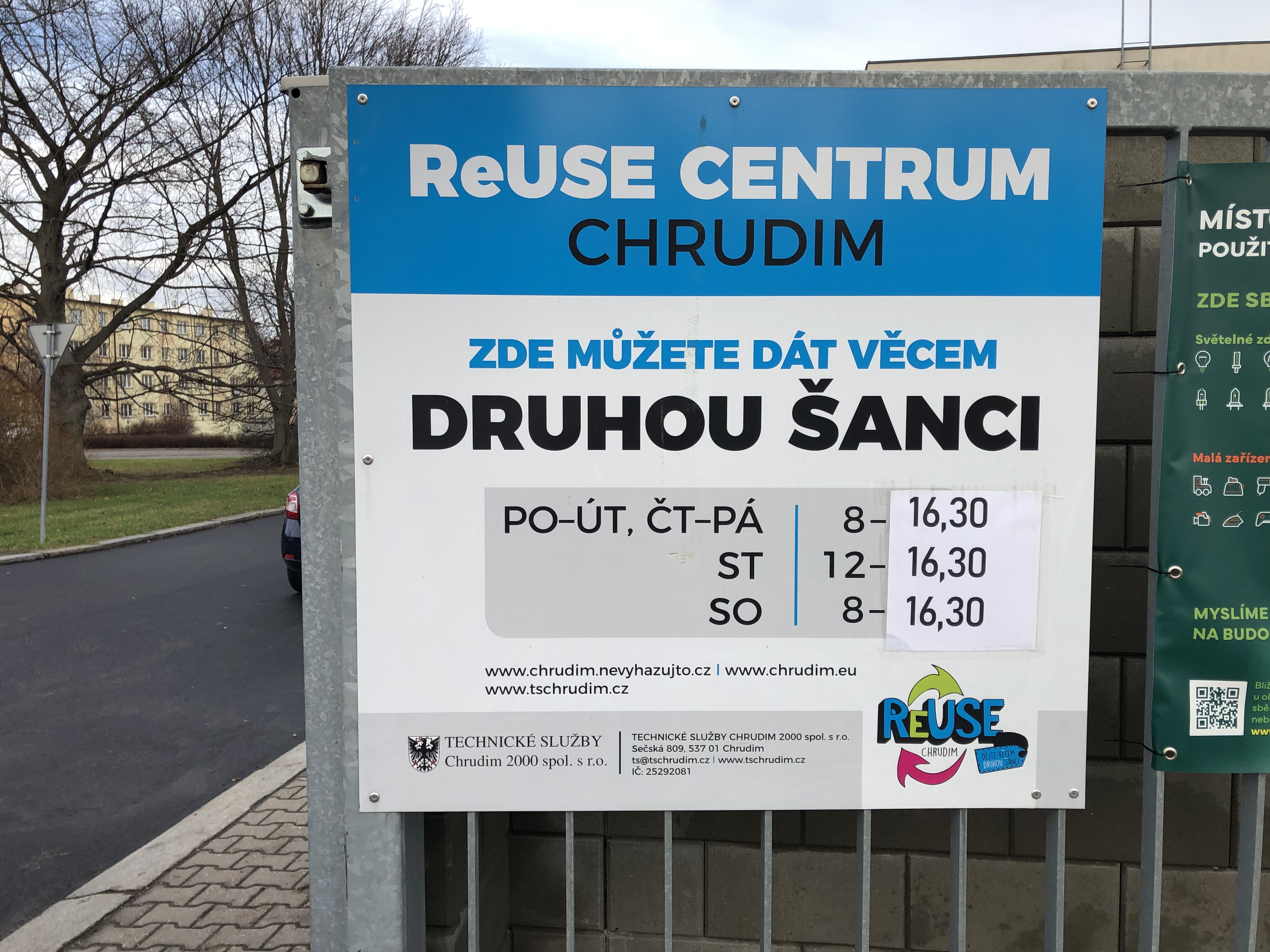
Centro RE – USE nella città di Chrudim
Paese:Descrizione:
L’Unione Europea, che sta attualmente cercando di ripensare la gestione delle risorse naturali e dei flussi di materiali negli Stati membri, sta preparando modifiche alla legislazione sui rifiuti che dovrebbero garantire il passaggio dalla natura lineare dell’economia attuale verso una cosiddetta economia circolare. L’economia circolare tiene conto dei limiti del nostro pianeta e mira a garantire la circolazione dei materiali, ridurre la produzione di rifiuti e, attraverso un cambiamento dei modelli di produzione e di consumo, creare anche opportunità occupazionali. I centri ReUSE possono apportare notevoli benefici sociali, soprattutto se gestiti con una chiara missione sociale, ad esempio come impresa sociale. Le attività di riuso offrono un elevato potenziale di creazione di posti di lavoro in quanto richiedono manodopera (raccolta, smistamento, pulizia, riparazione, ecc.). Il riutilizzo e la preparazione in questo concetto sono essenziali e la loro importanza si rifletterà nella gestione dei rifiuti della Repubblica ceca.
Le cose hanno una "seconda vita" e possono essere utilizzate anche per un altro scopo o qualcuno che può prenderle e vuole ripararle o smontarle e utilizzarle per altri scopi.
Allo stesso tempo, consente a molte famiglie di dotare la casa di oggetti funzionali, anche se più vecchi.
I Centri sono utilizzati da una vasta gamma di persone, sia provenienti da contesti socialmente svantaggiati, ma più spesso da vari tuttofare o appassionati che non vogliono circondarsi costantemente di cose nuove, ma amano avere cose con una storia e vogliono aiutare il ambiente.
I centri contribuiscono anche a ridurre le differenze sociali.
Questi centri fanno solitamente parte dei “Cantieri di Raccolta” che si trovano in tutte le città e permettono ai cittadini di depositare gratuitamente i rifiuti differenziati. Le persone che hanno trovato qualcosa di utile per loro, possono acquistare queste cose usate pagando una piccola somma.
Anche la città di Chrudim, dove operiamo, dispone di un proprio centro di riutilizzo, che fa parte del “Cantiere di Raccolta”. Il centro è stato realizzato nell'ambito di un progetto ambientale-sociale e sulla base delle richieste del pubblico. Il "cantiere di raccolta" e il centro di riuso sono gestiti da una società denominata "Servizio tecnico, Chrudim 2000 Ltd". In questo caso, i piccoli fondi ricavati dalla vendita vengono utilizzati per finanziare il rifugio per cani gestito dalla città di Chrudim.
Nella Repubblica ceca si sostiene la creazione di nuovi centri simili. Comuni, paesi e altri enti possono richiedere un contributo per costruire centri di riuso, cioè luoghi “per prevenire la produzione di rifiuti”. La sovvenzione arriva fino all’85% dei costi ammissibili e nel 2023 l’importo minimo prelevabile era di circa 20.410 euro.
Comunicati stampa
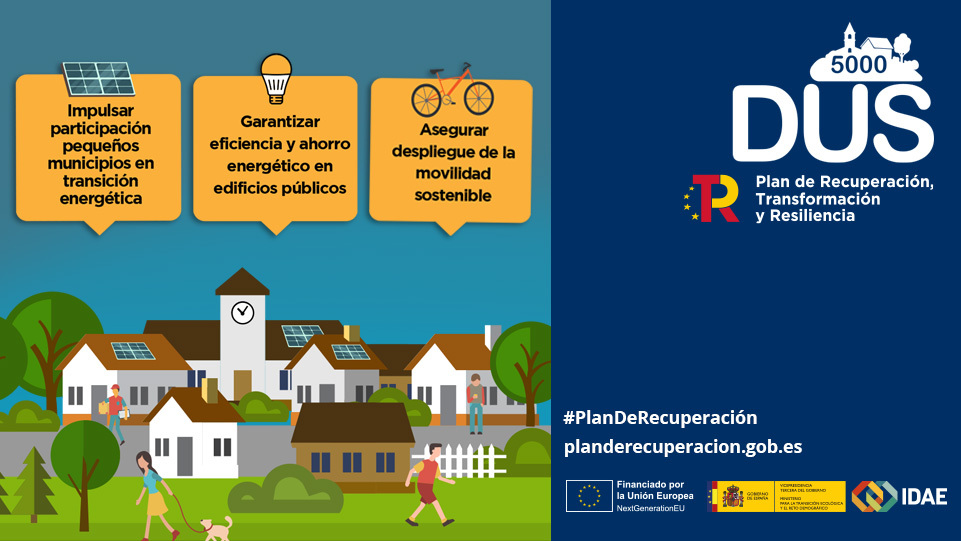
Energie sostenibili per ridurre lo spopolamento rurale
Paese:Descrizione:
Il Programma DUS 5000, ovvero il Programma di Sviluppo Urbano Sostenibile, è stato creato per aiutare le comunità a realizzare una transizione energetica contrastando allo stesso tempo lo spopolamento rurale di queste aree.
Il Programma di Sviluppo Urbano Sostenibile 5000 è una nuova linea di aiuti per l’attuazione di progetti di energia pulita nei comuni con sfide demografiche.
Le sovvenzioni andranno ai comuni definiti "comuni a sfida demografica". Si tratta di quelli con meno di 5.000 abitanti e dei comuni non urbani fino a 20.000 abitanti in cui tutte le loro singole entità demografiche contano fino a 5.000 abitanti.
Questo aiuto mira a promuovere lo sviluppo urbano sostenibile di questi comuni con azioni legate all’efficienza energetica negli edifici e nelle infrastrutture pubbliche, alla promozione degli investimenti green, all’autoconsumo e alla mobilità sostenibile.
Il comune di Ohanes sarà il primo nella provincia di Almería a realizzare l'installazione di energie rinnovabili per promuovere l'autoconsumo attraverso il Piano DUS 5000.
Il progetto Ohanes consiste nell'installazione di impianti solari fotovoltaici per l'autoconsumo in nove edifici o infrastrutture comunali. Ciò include il Municipio, l'impianto di trattamento delle acque, il Padiglione Sportivo, la Sala Polivalente "Los Depósitos", la Sala Polivalente "Matadero", la Casa Nuova, la scuola, il futuro Centro di Interpretazione e la Casa Medica.
Affinché un progetto possa beneficiare del programma DUS 5000, deve implementare una misura che consenta di ridurre le emissioni di CO2 previste. Le misure tra cui possono scegliere sono le seguenti:
● Riduzione della domanda e del consumo di energia negli edifici e nelle infrastrutture pubbliche.
● Impianti di produzione di energia elettrica rinnovabile per autoconsumo.
● Impianti di generazione termica rinnovabile e reti di riscaldamento e/o raffreddamento.
● Lotta all’inquinamento luminoso, illuminazione efficiente e intelligente, Smart Rural e ICT.
● Promozione della mobilità sostenibile.
I politici municipali sottolineano l’importanza di questo programma di investimenti per promuovere la sostenibilità e le energie rinnovabili nelle aree rurali.
Comunicati stampa
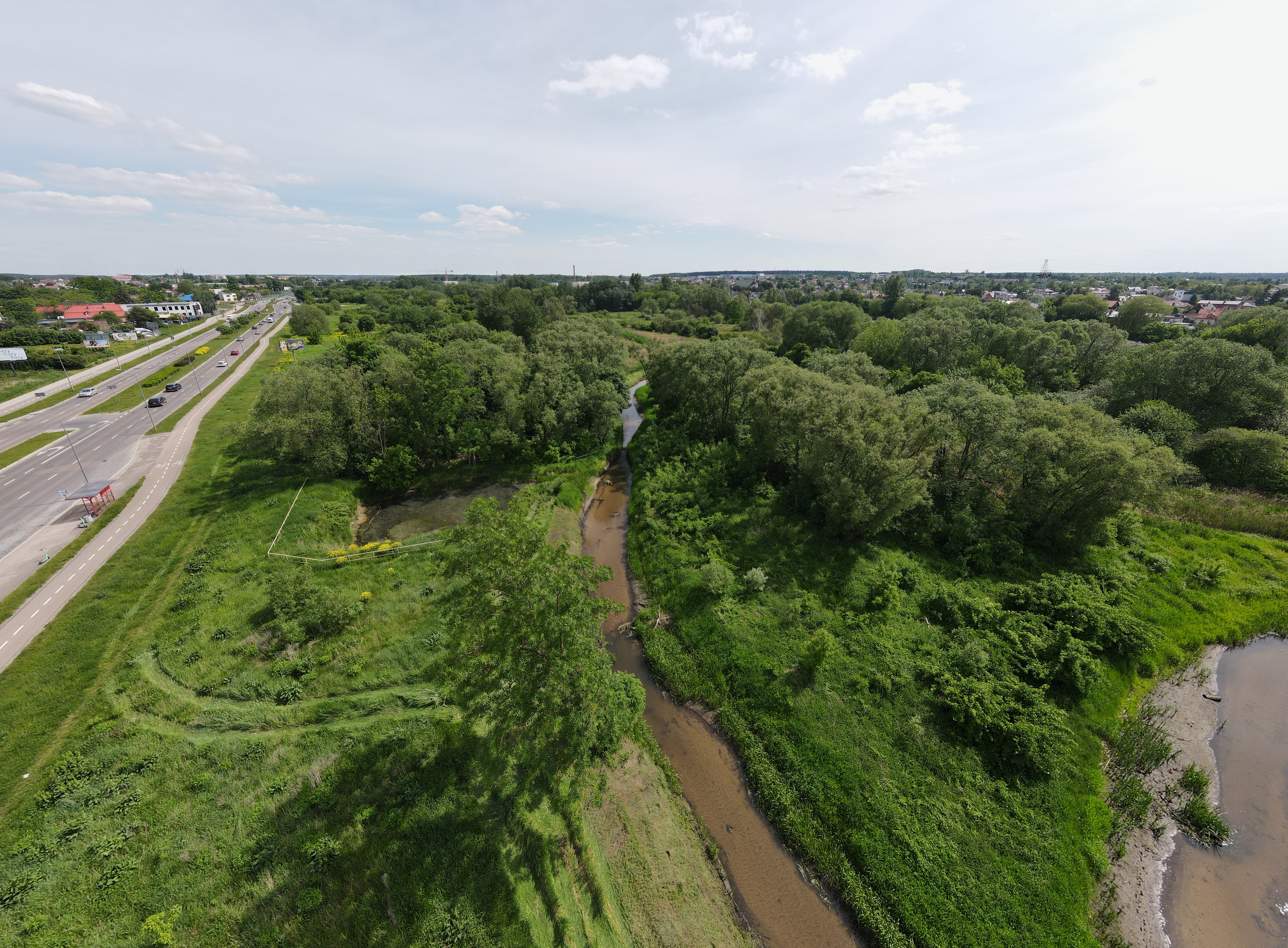
Ripristino del fiume
Paese:Descrizione:
Rinaturalizzazione e ripristino della forma naturale del fiume Biała a Białystok, città della Polonia orientale, capoluogo della regione Podlasie.
La parte principale del progetto è stata l'introduzione della rinaturalizzazione, ovvero il ripristino dei processi naturali dell'ecosistema. Le attività includevano la creazione di meandri e anse tortuose in una sezione del fiume dove prima scorreva dritto. Ciò ha contribuito non solo a ripristinare il carattere originale del fiume, ma ha anche creato un habitat più diversificato ed ecologico per la flora e la fauna.
Inoltre, è stata ripristinata una lanca, fornendo un'ulteriore area di ritenzione per trattenere l'acqua durante i periodi di forti piogge. Ciò ha dato al fiume la capacità di immagazzinare acqua, riducendo al minimo il rischio di inondazioni.
Per controllare il livello dell'acqua nel fiume è stata utilizzata una condotta di sbarramento. Si tratta di un dispositivo meccanico che regola il flusso dell'acqua e mantiene il livello ottimale dell'acqua in una determinata sezione del fiume. Grazie alla valvola di sbarramento è stato possibile adattare con precisione il livello dell'acqua alle mutevoli condizioni meteorologiche e prevenire possibili pericolose inondazioni. L’effetto finale è stato quello di aumentare la sicurezza delle aree urbane circostanti.
L’investimento non solo ha contribuito a creare un ambiente esteticamente gradevole, ma è stato anche una risposta alle mutevoli condizioni climatiche. Le piogge sempre più frequenti e intense hanno messo a dura prova i sistemi idrici della città. I lavori sul fiume Biała miravano ad adattarsi a questi cambiamenti creando un bacino di ritenzione che controlla efficacemente il flusso dell'acqua, riducendo al minimo il rischio di inondazioni.
Gli effetti dei lavori sono già visibili poco dopo il completamento del progetto. Sono apparse nuove specie di pesci, piante e uccelli e aree di valore naturale hanno iniziato ad attrarre residenti e turisti. Lo sviluppo delle infrastrutture lungo il fiume, come le piste ciclabili, il ripristino del carattere naturale del luogo e la creazione di aree verdi, hanno reso questa parte del fiume Biala un luogo accogliente per i residenti di Bialystok.
L'investimento è stato finanziato dal bilancio del Comune di Bialystok, mentre i lavori sono stati realizzati nel 2015 e nel 2016.
La ricostruzione del fiume Biala, realizzata dalla città di Bialystok, è stata tra i tre progetti premiati nel 2022 nel concorso della Direzione generale per la protezione ambientale per il Premio polacco per il paesaggio.
Comunicati stampa
.jpg)
Parchi orticoli di Lisbona
Paese:Descrizione:
Alla fine del 2023, i 24 orti e fattorie di Lisbona occupavano 16,4 ettari del territorio cittadino (10.005 ettari). Oltre a questi spazi comunali, ci sono piccoli orti in 70 scuole pubbliche, con finalità educative e di approvvigionamento comunitario, e in alcuni casi con coltivazione idroponica.
L'agricoltura è sempre esistita nelle città e a Lisbona si ha notizia dell'esistenza di orti e fattorie già in epoca romana. Dalla metà del XX secolo gli orti si sono moltiplicati a dismisura a causa della migrazione delle popolazioni rurali verso la capitale e l’economia di sussistenza. La regolamentazione di questi spazi è stata imposta dalla crescita dell'occupazione immobiliare del territorio urbano e dalle necessità di pianificazione. All’inizio del 21° secolo si sono aggiunte le preoccupazioni ambientali.
I 21 orti comunali in esercizio (9,7 ettari) sono suddivisi in 850 appezzamenti di coltivazione, assegnati tramite bando pubblico. Il criterio principale è la distanza tra il luogo in cui vive il cittadino e il parco, perché gli orti hanno anche una funzione di socializzazione comunitaria.
Oltre agli orti, l'agricoltura a Lisbona comprende una Fattoria Pedagogica (2 ettari dedicati al collegamento tra campagna e città), un vigneto di 2 ettari (esplorato in collaborazione con un'azienda vinicola), un frutteto di 2,7 ettari (esplorato in collaborazione con la prigione Monsanto).
Molte delle aree coltivabili di Lisbona sono integrate negli spazi circostanti dei corridoi verdi cittadini, come il Parque do Zé Pinto, a Campolide, che ha un prato ricco di biodiversità, integrato nel Corridoio Verde della Monsanto. I prati irrigui sono più ecologici delle zone erbose, poiché non consumano acqua per l’irrigazione e sono ricchi di vegetali che fissano l’azoto atmosferico. A Lisbona esistono già 5 ettari di prati irrigati, che contribuiscono alla biodiversità e all’equilibrio dell’ecosistema urbano.
Comunicati stampa
Degrado territoriale
Paese:Descrizione:
Il monumento naturale "Na Plachtě" si trova nella parte sudorientale della città di Hradec Králové. Il monumento, unico nel suo genere, è situato in prossimità di un tessuto urbano che può rappresentare una grossa minaccia per l'habitat naturale del monumento.
Nei dintorni del "Na Plachtě" finora sono state registrate circa 720 specie di piante superiori, 69 specie di muschi, 107 specie di funghi e 2250 specie di animali che possiamo trovare nei boschi, nei prati e nelle zone umide. Di queste, circa 107 sono protette dalla legislazione ceca (specie in pericolo, in grave pericolo e in pericolo critico) e inoltre 19 specie hanno importanza europea. Diverse specie di animali sono presenti nel "Na Plachtě" singolarmente o in bassa quantità in tutta la Repubblica ceca. Il monumento naturale "Na Plachtě" è considerato unico sia dal punto di vista botanico che zoologico e l'unicità è accentuata dal contatto con la città.
Dagli anni '60 si è tentato di distruggere la località "Na Plachtě" fermandola. C’era un grave pericolo in tempi di pianificazione socialista. E alla fine degli anni '80 era già iniziata la costruzione della rete fognaria per un complesso residenziale di 19.000 persone.
È iniziato anche il trasferimento degli animali protetti, ma all’ultimo minuto il progetto è stato abbandonato.
Dopo il 2008 c'erano diversi progetti per la costruzione di "Na Plachtě" come complesso residenziale da parte di IPB Real (ORCO Property Group), magazzini ed edifici per uffici di Kelcom International e Turck IMO. Poi, nel 2009, la società di costruzioni STAKO,L.t.d. si dedicò alla devastazione delle sue terre a causa della presenza di specie particolarmente protette, portando 1.300 tonnellate di rifiuti nelle zone di svernamento degli anfibi.
Dagli anni '80 gli ambientalisti si battono per dichiarare l'area del “Na Plachtě” come area protetta. Nel 1998 “Na Plachtě” è stato dichiarato monumento naturale protetto “Na Plachtě” 1 e “Na Plachtě” 2. L'offerta dei monumenti naturali “Na Plachtě” 1 e 2 non è stata in grado di garantire una protezione sufficiente degli habitat unici. Un semplice esempio sono gli anfibi, i cui luoghi di svernamento si trovavano al di fuori dei monumenti naturali “Na Plachtě” 1 a 2. Di conseguenza, gli ambientalisti hanno avviato la designazione del monumento naturale “Na Plachta” 3 e la protezione di quest’area ampliata in sotto forma di una rete europea di siti significativi di aree protette europee, Natura 2000. Hanno anche avviato una modifica al piano di zonizzazione della città di Hradec Králové per trasferire l'uso di queste aree dalle aree dello sviluppo residenziale a più piani alle aree di il verde.
Una campagna pubblica, inclusa una petizione, ha contribuito a sostenere l'ampliamento del monumento naturale. La petizione è stata chiusa il 20 novembre 2009 e sostenuta da 14.000 cittadini! La petizione ha contribuito notevolmente alla proclamazione del monumento naturale “Na Plachtě” 3 nel 2012.
Vogliamo che questo paradiso naturale unico sia preservato per le generazioni future.
Comunicati stampa
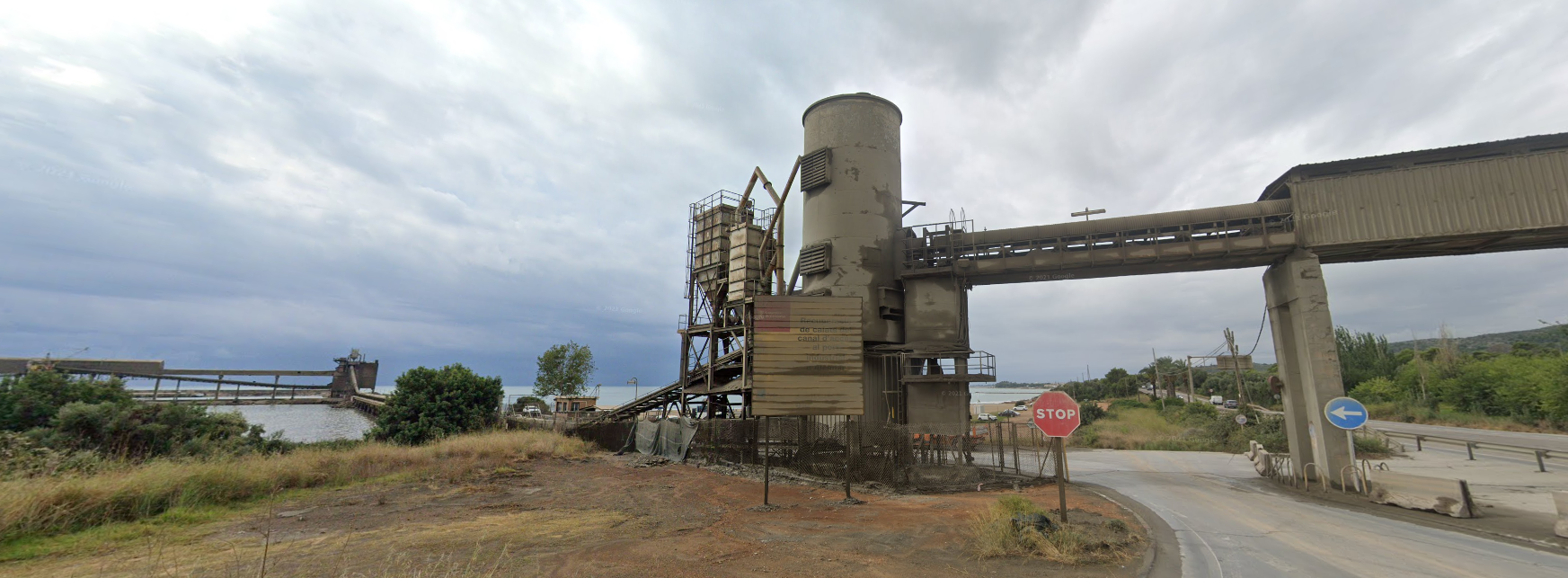
Progetto europeo HYIELD: il primo impianto europeo di produzione di idrogeno verde su scala industriale proveniente da rifiuti
Paese:Descrizione:
L’Europa attualmente produce 300 milioni di tonnellate di rifiuti che hanno il potenziale per generare più di 30 milioni di tonnellate di idrogeno rinnovabile.
La decarbonizzazione del pianeta è uno degli obiettivi delineati nel progetto europeo HYIELD. Per raggiungere questo obiettivo, la decarbonizzazione di un elemento come l’idrogeno, attualmente responsabile di oltre il 2% delle emissioni totali di CO₂ a livello mondiale, con conseguente idrogeno verde è un aspetto fondamentale.
Il progetto HYIELD è stato approvato per il finanziamento nell'ambito del bando Horizon Europa con la denominazione "Impianto dimostrativo per la conversione dei rifiuti in idrogeno". Questo invito è guidato dall’impresa comune Clean Hydrogen (Clean Hydrogen JU), l’entità che supervisiona i finanziamenti dell’Unione europea e le attività di ricerca e innovazione relative all’idrogeno, per sostenere il Green Deal europeo e la strategia dell’UE sull’idrogeno.
L’idrogeno verde sta guadagnando crescente interesse in Europa come percorso per decarbonizzare vari settori, tra cui le industrie ad alta intensità energetica, l’aviazione e il trasporto marittimo.
Il progetto da 15,5 milioni di euro, cofinanziato dalla Clean Hydrogen Partnership attraverso il programma Horizon Europe con una sovvenzione di 10 milioni di euro, mira a sviluppare una tecnologia innovativa Waste-to-Green Hydrogen. Durerà i prossimi 4 anni e coinvolgerà 16 partner provenienti da Spagna, Francia, Lussemburgo, Norvegia, Germania e Svizzera.
L'impianto di conversione dei rifiuti in idrogeno utilizzerà la tecnologia di gassificazione CleanTech di WtEnergy Advanced Solutions e il reattore di separazione a membrana di H2Site. Verrà implementato in un cementificio CEMEX in Spagna, dove l’idrogeno verde verrà utilizzato nella produzione di cemento.
Durante lo sviluppo del progetto HYIELD, si prevede che l'impianto tratterà oltre 2.000 tonnellate di rifiuti e produrrà circa 400 tonnellate di idrogeno verde. Questo idrogeno sarà testato per usi industriali, come carburanti puliti, produzione di fertilizzanti e altro ancora.
Nel corso dei quattro anni del progetto, tecnologie e processi saranno integrati per convertire in modo efficiente i flussi di rifiuti biogenici in idrogeno verde di elevata purezza a un costo altamente competitivo. L’obiettivo è dimostrare la sua applicabilità nel favorire la decarbonizzazione di diversi settori, tra cui il trasporto marittimo, l’aviazione e le industrie ad alta intensità energetica.
Comunicati stampa
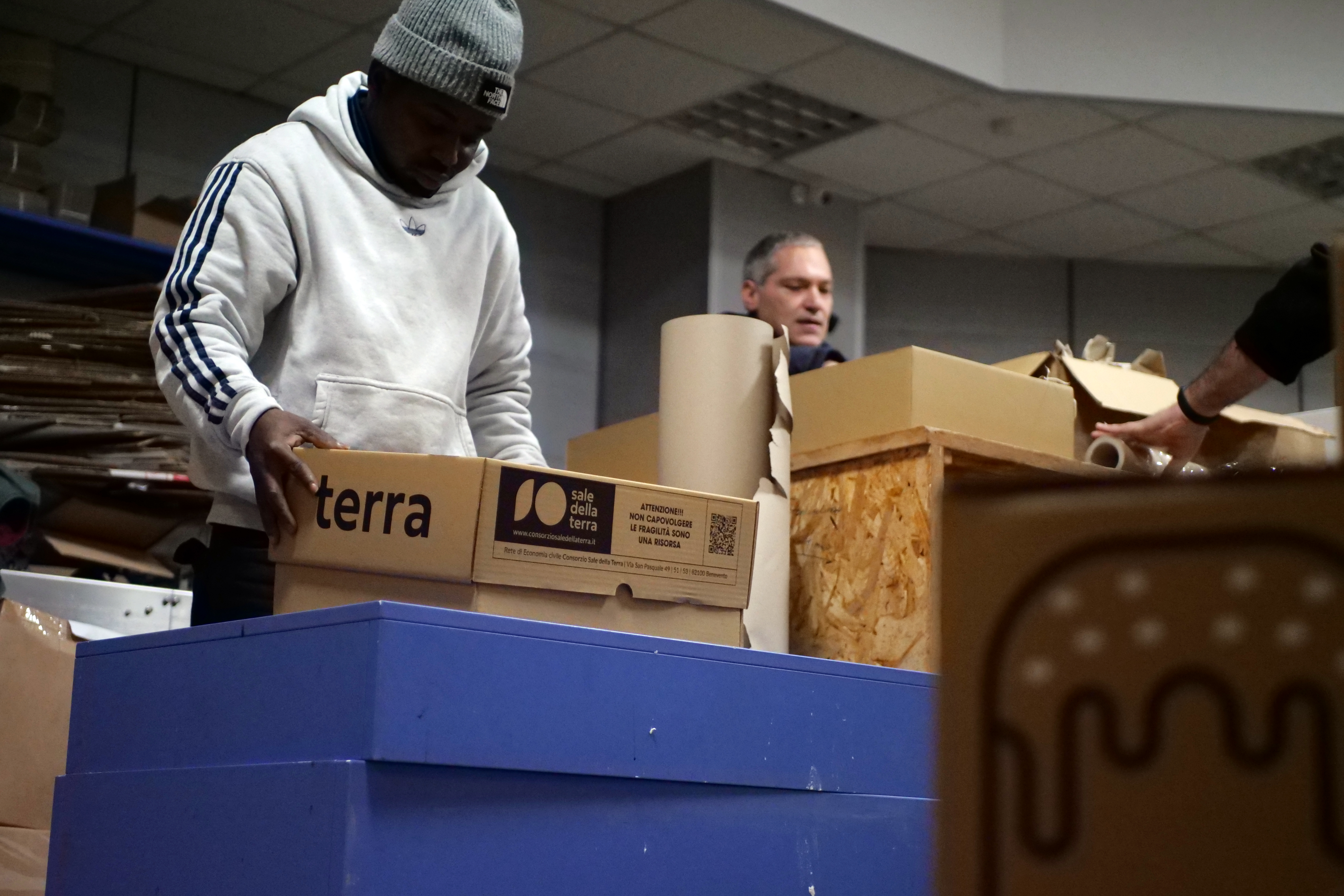
Gioosto. Negozio B2B sostenibile per l'inclusione sociale e un ambiente migliore
Paese:Descrizione:
Gioosto è un interessante progetto che ha sede in sud italia, in provincia di benevento.
Un magazzino dove convergono circa 1000 prodotti sostenibili con materie prime bio da circa 100 aziende.
In Gioosto si offre una selezione di prodotti di eccellenza, e il lavoro consiste nell’incrociare la domanda di prodotti realmente sostenibili con una offerta altamente selezionata.
Per ogni prodotto che viene stoccato in magazzino, vi è una analisi preliminare dell’azienda e del metodo di produzione.
La mission di gioosto è chiara e trasparente: il costo ambientale nel lavoro di produzioni di beni di consumo ha un peso molto importante, e intraprendere azioni concrete per la sostenibilità è diventato un obiettivo necessario.
parliamo di un approccio olistico al problema del cambiamento climatico, affrontato attraverso anche l’esigenza economica e di sostenibilità di lavoro delle aziende.
Oggi fare la cosa giusta per il pianeta e le persone coincide con il fare l’interesse
aziendale.
Il metodo con cui gioosto seleziona i prodotti è nell’utilizzo dell’indice next, un importante strumento sviluppato negli ultimi anni con una struttura di analisi e studio di qualità molto alta.
- L'indice NeXt ESG® è stato oggetto di due pubblicazioni scientifiche e riconosciuto come marchio di certificazione dalla Commissione Europea.
Utilizzato come sistema di riferimento da più di 40 organizzazioni nazionali, è un indice che misura attraverso 6 pilastri la sostenibilità integrale e connette la produzione e la qualità del lavoro agli obiettivi di sviluppo sostenibile: SUPPLY CHAIN, RELATIONSHIP WITH ENVIRONMENT, PEOPLE AND The WORK ENVIRONMENT, Attitudes TOWARDS THE LOCAL COMMUNITY, GOVERNMENT OF the ORGANIZATION, RELATIONSHIP WITH CUSTOMERS
L'indice NeXt® ESG permette di essere utilizzato per tutti gli ambiti della cooperazione e dell'imprenditoria sociale coinvolti nella
piattaforma Gioosto.com non solo di valutare e selezionare le migliori eccellenze italiane, ma anche di restituire alle imprese con un pizzico di sintesi in grado di evidenziarne i punti di forza e le aree di miglioramento.
NeXt Economy e Gioosto svolgono un'attività di orientamento professionale per le aziende che hanno bisogno di far crescere la loro sostenibilità sociale e/o ambientale.
L’obiettivo del portale gioosto è dare spazio e nuove possibilità commerciali a realtà innovative e responsabili ma spesso piccole o fragili, aggregandole e facendo “massa critica”.
Supportare le buone pratiche messe in «Rete» per evidenziare come essere socialmente e ambientalmente è conveniente. Le aziende in questo modo si orienteranno naturalmente verso questo sistema produttivo.
I PROBLEMI CHE VUOLE provare ad affrontare GIOOSTO
Per i produttori:
Aumentare le risorse e il know how per gestire un e-commerce sostenibile e connettere le buone pratiche del territorio per fare Rete e rafforzare la propria offerta.
Per i consumatori:
Rendere maggiormente accessibili i prodotti di aziende sostenibili e le loro informazioni, fornendo un unico portale di riferimento per risparmiare tempo e risorse con carrelli di prodotto aggregati e multi-settoriali.
Create pathways to citizenship, and active and vote with your wallet to the promotion of good practices that are sustainable and of their products
«con più consapevolezza, informazione e coordinamento il voto col portafoglio sarà la leva che ci consentirà di cambiare il mondo. e di orientare il sistema economico verso la creazione di valore ad alta dignità di lavoro e tutela dell’ambiente. dal basso e senza dover abbattere nessun nemico invincibile. per raggiungere la meta abbiamo bisogno di strumenti come questo. attraverso le nostre scelte di produzione e consumo, possiamo cambiare il mondo»
Nonostante in italia i sistemi di magazzini e trasporto siano enormemente più efficienti nel Nord Est, Gioosto ha deciso di aprire il proprio magazzino in una area rurale del sud italia, per accettare la sfida della mancanza di lavoro tipica delle aree interne del sud.
Comunicati stampa
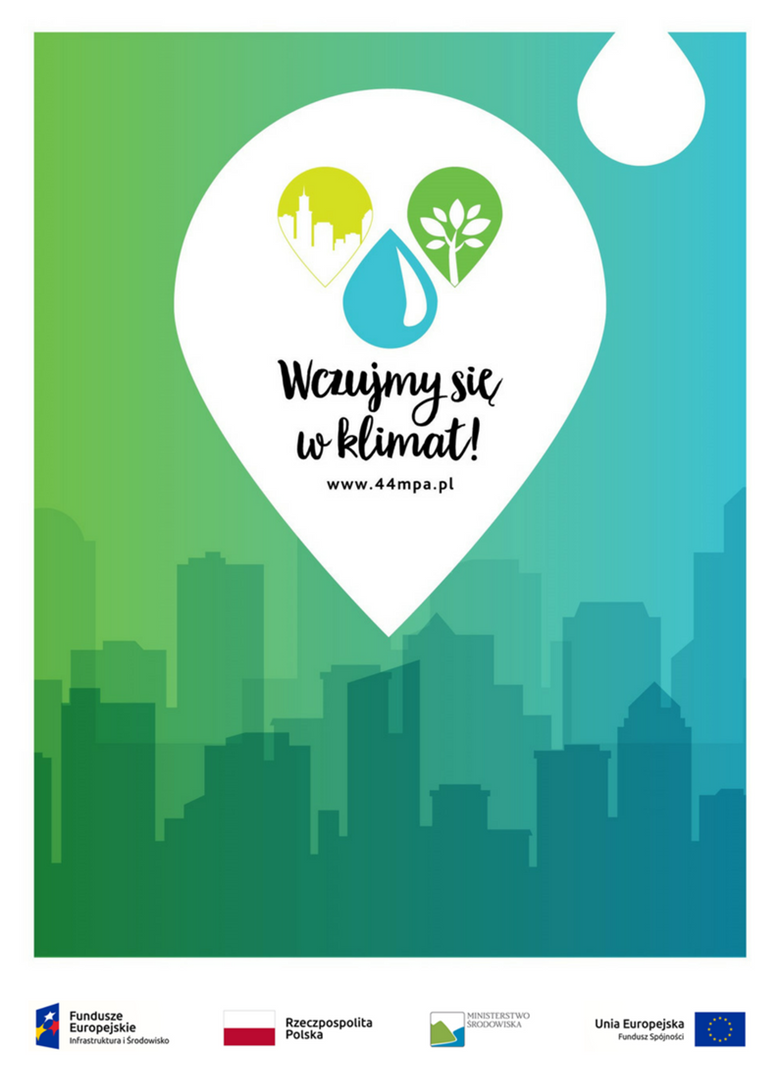
Piano di adattamento ai cambiamenti climatici della città di Bialystok.
Paese:Descrizione:
La città di Bialystok (Polonia) ha sviluppato il "Piano di adattamento ai cambiamenti climatici della città di Bialystok al 2030" come parte del progetto governativo "Sviluppo di piani di adattamento ai cambiamenti climatici per le città con popolazioni superiori a 100.000 abitanti".
I lavori sul piano sono iniziati nel gennaio 2017 e sono proseguiti per 24 mesi, coprendo le aree di intervento per mitigare gli effetti e i rischi del cambiamento climatico. Il documento è essenziale anche quando si richiedono sovvenzioni UE per progetti sul cambiamento climatico.
Le principali aree di intervento del piano sono:
- gestione delle risorse idriche,
- trasporto,
- uso del territorio,
- salute pubblica.
Esempi di attività includono il miglioramento e l’espansione del sistema fognario, la costruzione di bacini di ritenzione e la creazione di infrastrutture verdi per la mitigazione termica. Il progetto comprende anche l'adattamento ai rischi termici (comprese le cosiddette notti tropicali - con temperature che non scendono sotto i 20°C) e quelli legati alle precipitazioni, alle inondazioni e ai ristagni.
Il Piano di adattamento al cambiamento climatico della città di Bialystok al 2030 ha 6 obiettivi strategici:
1. creazione di un sistema di supporto alle decisioni,
2. creazione di un Centro Educativo per l’Adattamento ai Cambiamenti Climatici,
3. rafforzare la capacità dei servizi,
4. adattamento ai rischi termici,
5. adattamento alle precipitazioni e alle inondazioni/pericoli sottomarini,
6. tenere conto del cambiamento climatico nella pianificazione territoriale.
Per contrastare meglio gli effetti del cambiamento climatico, il piano individua azioni in diversi ambiti: cambiamenti nelle regole organizzative della città, educazione dei residenti sui rischi e introduzione di nuove soluzioni tecniche.
Cambiamenti organizzativi:
Adeguare le normative locali, anche in materia di pianificazione urbanistica, per affrontare meglio i rischi climatici. Organizzazione degli spazi pubblici, norme di emergenza e miglioramento del lavoro dei servizi cittadini e dei sistemi di segnalazione dei pericoli.
Attività di informazione e formazione:
Introdurre attività di informazione ed educazione che aumenteranno la consapevolezza pubblica sui cambiamenti climatici.
Promozione di buone pratiche di adattamento per salvaguardare la città e i suoi abitanti.
Attività tecniche:
Investimenti in infrastrutture nuove o nel potenziamento di infrastrutture esistenti che contribuiranno a proteggere la città dagli effetti negativi del cambiamento climatico.
Comunicati stampa

Quartieri sociali più verdi
Paese:Descrizione:
La città di Lisbona conta 67 quartieri sociali, che ospitano le famiglie più bisognose e contribuiscono alla loro inclusione sociale. Tre di questi sono considerati ecoquartieri: Boavista, Cruz Vermelha e Padre Cruz, il più grande della penisola iberica con circa 20.000 abitanti. Questi quartieri, costruiti tra gli anni '40 e '60 del secolo scorso, sono stati oggetto, negli ultimi anni, di un programma di rehousing a causa del degrado delle abitazioni precedenti, le nuove sono più sostenibili dal punto di vista ambientale.
I nuovi edifici realizzati sono più accessibili, con rampe di accesso e un disegno architettonico che consente futuri adattamenti delle unità abitative a nuove configurazioni familiari. Gli edifici sono realizzati e dotati di: i) un livello di isolamento più elevato che protegge dall'umidità e contribuisce a ridurre i consumi energetici; ii) pannelli solari che forniscono acqua calda per ogni appartamento; iii) collettori di acqua piovana per l'irrigazione di piccoli orti; iv) ingressi luminosi in tutte le direzioni per sfruttare la luce naturale; v) utilizzo dell'acqua del bagno per lo scarico dei wc.
Oltre all’edilizia abitativa che rende questi quartieri esempi di sostenibilità ambientale, inclusione sociale e sviluppo locale, ci sono altre misure che contribuiscono all’obbiettivo. Nel quartiere Boavista, in particolare, sono state installate tecnologie legate alle energie rinnovabili negli edifici sociali, come i pannelli solari che riscaldano l'acqua della piscina del quartiere, è stato creato un circuito pedonale (“PediBus”) ed è stato concesso l'accesso gratuito a Internet nel quartiere. (“Net-Verde”).
Nei tre quartieri sono state realizzate azioni di sensibilizzazione ambientale attraverso il sito web Eco-Bairro e le reti digitali, attività sportive e ricreative. È stata inoltre promossa l’educazione al consumo responsabile di acqua ed energia e al risparmio sui costi, con monitoraggio attraverso mediatori comunitari.
Comunicati stampa
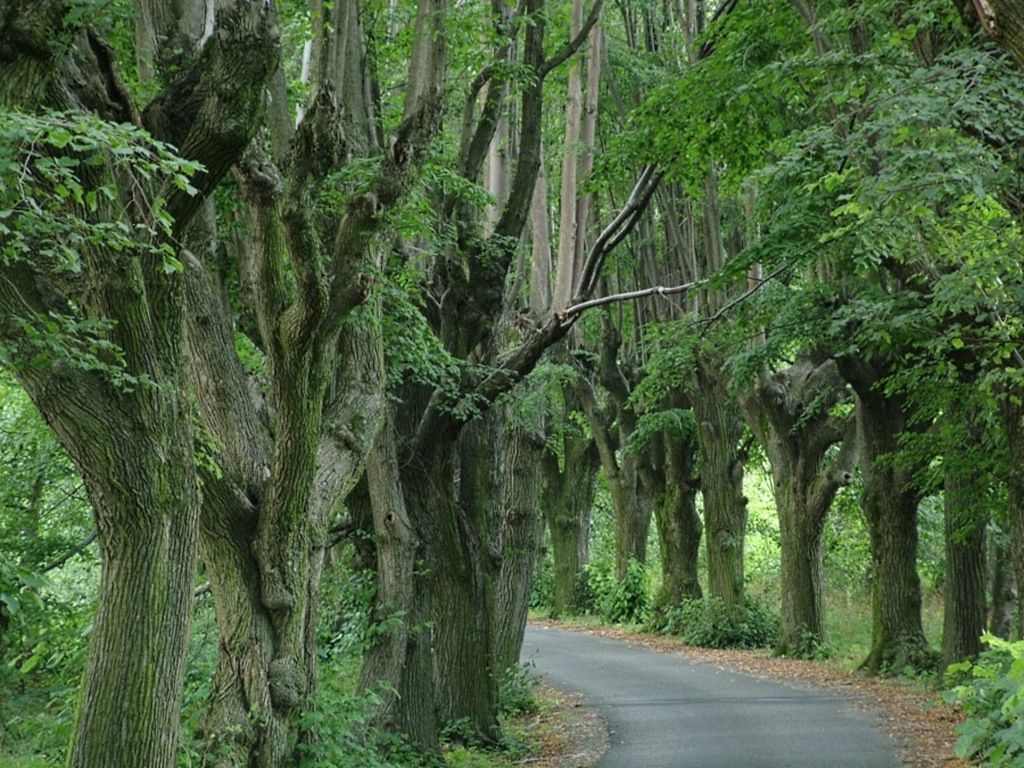
Azioni urgenti per combattere il cambiamento climatico
Paese:Descrizione:
I viali alberati appartengono intrinsecamente al paesaggio ceco. Hanno molti significati e uno è che aumentano la varietà e migliorano la permeabilità del paesaggio, sono un importante elemento estetico e migliorano le condizioni per la biodiversità nel paesaggio. Allo stesso tempo sottolineano i punti dominanti del paesaggio e portano i visitatori verso interessanti formazioni naturali, insediamenti umani o singole strutture.
In Boemia le prime menzioni di viali alberati risalgono ai tempi del re Carlo IV. I primi viali alberati documentati si trovavano sul territorio della capitale Praga e collegavano zone significative come il Castello di Praga. La maggior parte dei viali alberati furono realizzati in epoca barocca, quando la nobiltà li utilizzava per evidenziare i vialetti dei castelli, i cortili. Le cime degli alberi erano spesso perfettamente simmetriche. Le specie arboree più comuni erano Tilia, Quercus e Populus. Spesso cappelle o croci punteggiavano i vicoli. In campagna erano spesso costituiti da alberi da frutto. Sotto il regno di Maria Teresa nel 1752, vi era l'obbligo di piantare alberi lungo i sentieri dei viali, consigliati erano Tilia, Morus, Sorbus, Fraxinus, Juglans e alberi da frutto selvatici.
Un esempio è il villaggio Sobětuchy, che si trova non lontano dalla città Chrudim. Il villaggio è situato in un immaginario incrocio tra il paesaggio urbanizzato di "Polabí" e il territorio paesaggistico protetto di "Železné Hory". Nel complesso si tratta del quinto spazio urbanizzato più popoloso della Repubblica Ceca e quindi si sta cercando di restituire elementi paesaggistici naturali di grande importanza. In questo caso si trattava della piantumazione del viale alberato "Perný kopec", lungo 656 m. L'obiettivo era ripristinare un collegamento tra i comuni limitrofi di "Sobětuchy" e "Rabštejn Lhota", aumentare la biodiversità, offrire ai cittadini un luogo dove passeggiare.
Nel 2019 sono stati consigliati per la piantumazione 78 alberi e 520 cespugli. Le specie principali sono ad esempio Quercus robur, Pyrus communis, Malus silvestris, Acer campestre, Tilia cordata e Prunus Avium e 5 varietà di arbusti.
Successivamente, su proposta dei cittadini, seguendo le tradizioni storiche, si è deciso di costruire nel 2020 una piccola chiesa nel viale alberato, la "Cappella dei Quattro Santi".
Comunicati stampa
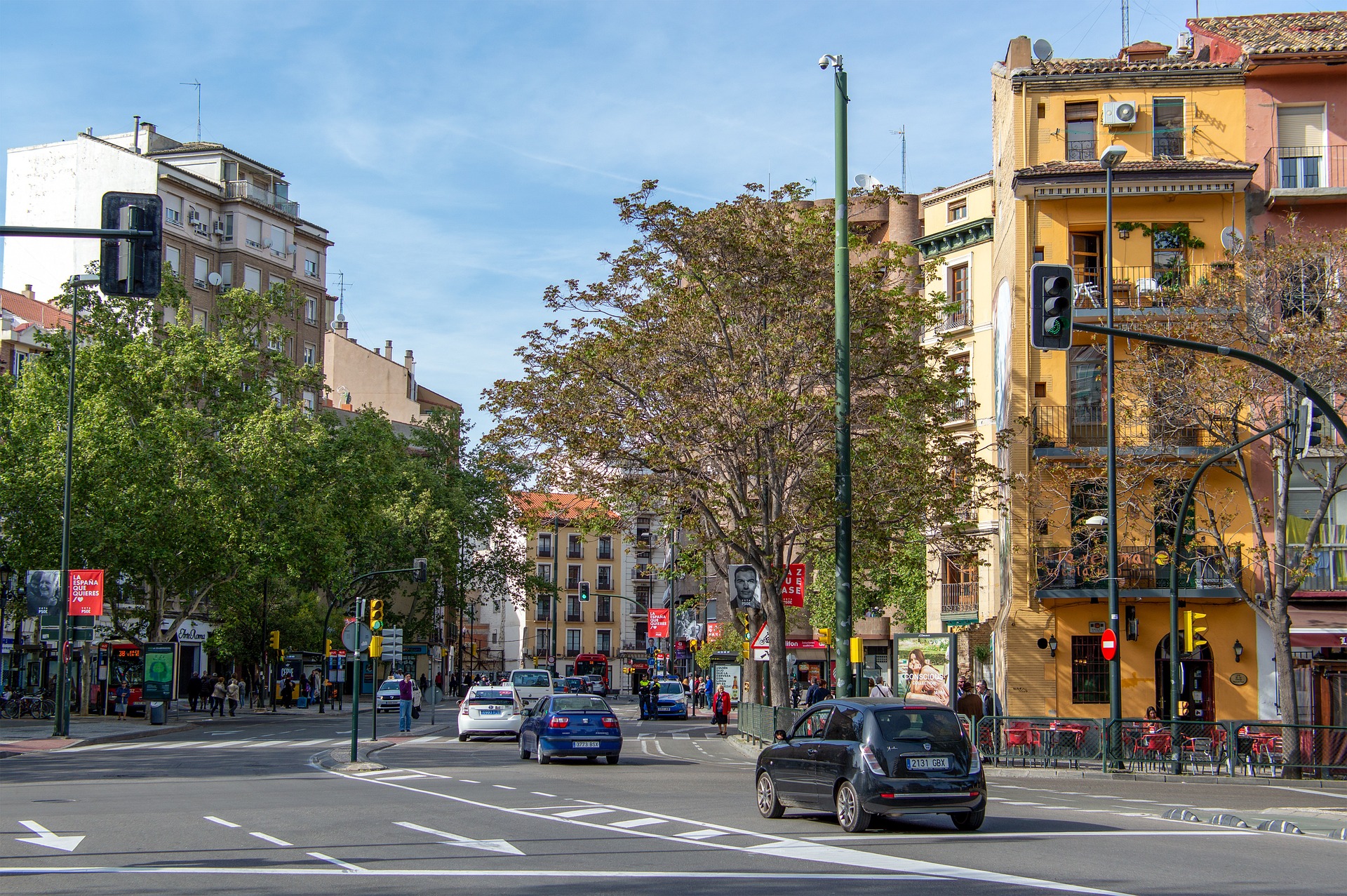
Piano di adattamento ai cambiamenti climatici per Saragozza 2030
Paese:Descrizione:
Nel 2022, la città ha sviluppato il Piano di adattamento ai cambiamenti climatici per Saragozza 2030 (#PACCZ) come parte degli impegni assunti dal Consiglio comunale di Saragozza nell'ambito del Patto europeo dei sindaci per il clima e l'energia. Il Piano di adattamento ai cambiamenti climatici di Saragozza (PACCZ) 2030, approvato dal governo di Saragozza il 13 aprile 2023, ritiene il quadro per l'azione di adattamento ai cambiamenti climatici nella città. Il piano consente alla città di essere meglio preparata ad affrontare le conseguenze del cambiamento climatico e a ridurne l’impatto sulla salute, sull’economia e sull’ambiente.
La risposta al cambiamento climatico richiede l’attuazione di misure lungo due direttrici:
● Mitigazione per affrontare le cause:
o Ridurre le emissioni di gas serra (misure di efficienza energetica, riduzione del consumo di combustibili fossili, migliore gestione dei rifiuti, ecc.)
o Aumentare la cattura di CO2 creando pozzi (come le foreste urbane)
● Adattamento per affrontare le conseguenze:
o Preparare le città ad affrontare i cambiamenti a breve, medio e lungo termine
o Evitare e ridurre gli impatti e i rischi per rendere la popolazione e gli ecosistemi meno vulnerabili.
Il documento si basa sull’analisi dei rischi e della vulnerabilità condotta per il PACES 2030 e presenta la situazione attuale della città per quanto riguarda i rischi climatici nei prossimi decenni.
Il caldo estremo e le inondazioni dei fiumi sono identificati come le minacce a più alto rischio che la città dovrà affrontare, con un impatto su vari settori e sulla popolazione.
I rischi di freddo estremo, siccità, venti, incendi boschivi, cambiamenti chimici nell’aria e nell’acqua e i rischi biologici sono classificati come aventi un livello di minaccia moderato.
Si ritiene che le precipitazioni estreme e i movimenti di massa rappresentino un grado inferiore di minaccia climatica.
Il piano è strutturato in 9 aree di azione che coprono, tra gli altri, la salute umana, l’acqua e le risorse idriche, le infrastrutture verdi, la biodiversità, il patrimonio naturale e le aree protette. In totale, 47 misure comporteranno una riconsiderazione della progettazione e della gestione della città, cercando di coinvolgere altre amministrazioni, enti e società civile per unire gli sforzi e raggiungere obiettivi comuni.
Aree di azione:
1. Salute umana
2. Acqua e risorse idriche
3. Infrastrutture verdi, biodiversità, patrimonio naturale e aree protette
4. Agricoltura e alimentazione
5. Mobilità e trasporti
6. Pianificazione territoriale e urbanistica, Edilizia ed Energia
7. Educazione e società
8. Altri settori, Industria e servizi, Sistemi finanziari e assicurativi, Turismo
9. Ricerca e Innovazione
Il piano menzionato nella buona pratica è stato appena approvato nel 2023 e il primo progetto sarà implementato nei prossimi mesi.
Comunicati stampa
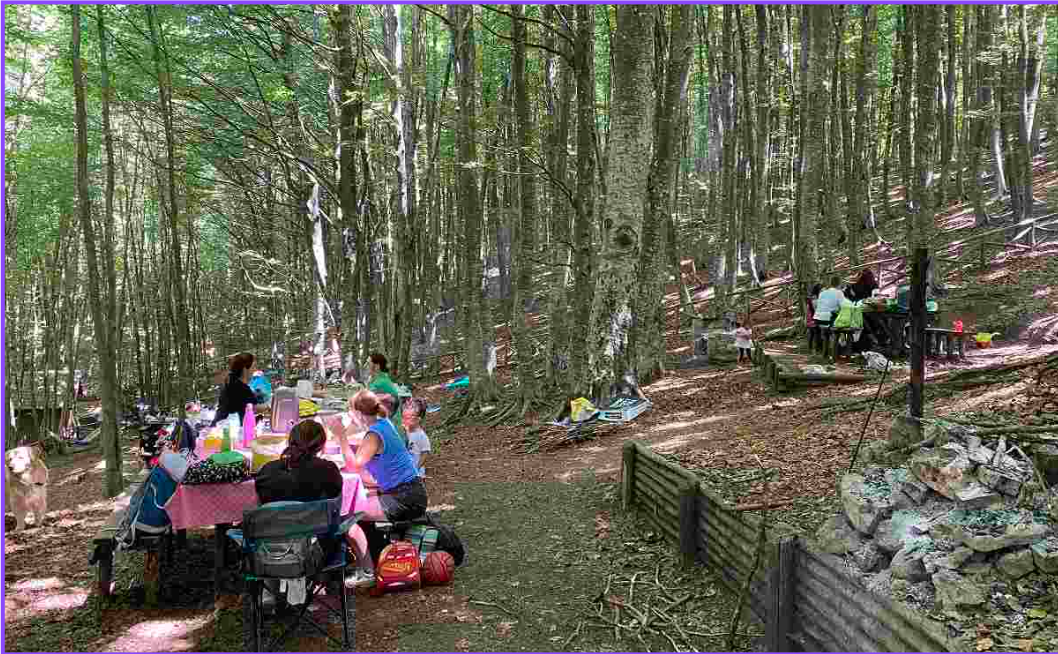
Svegliare la bella dormiente, la conservazione della natura in giro per la città
Paese:Descrizione:
Benevento, pur essendo relativamente piccolo come centro urbano, rispetto ad altre città in Italia, è un importante polo urbano nelle zone interne dell'Italia meridionale, Grazie alla sua posizione centrale all'interno della regione.
A pochi chilometri dalla città, si può accedere aree naturali e parchi nazionali.
A causa della sempre più frequente espansione delle aree urbane a scapito di aree naturali, il WWF Sannio, in collaborazione con l'Università di Agraria e con il contributo della Fondazione per il Sud, ha avviato il progetto "Sveliamo la Dormiente". "Dormiente" è il nome dato alla montagna più vicina alla città di Benevento, che è anche la posizione corrente del Taburno Oasi.
Il progetto mira a promuovere una maggiore sostenibilità nell'uso del parco, sia in modo occasionale e regolare i visitatori, grazie ad una maggiore conoscenza delle sue strutture, dei servizi, delle merci e delle risorse naturali. Un aumento al cittadino ed al turista la partecipazione è previsto. Le azioni finalizzate al corretto utilizzo delle risorse del parco includono:
1. La mappatura, classificazione e catalogazione di sentieri e la creazione di un sistema elettronico di carta e mappa.
2. Manutenzione percorsi con piccoli interventi, per garantire un uso sicuro.
3. Organizzazione di eventi per promuovere la conoscenza dei sentieri, con percorsi ambientali, storici, gastronomici.
4. La compilazione di un atlante della flora e della fauna del parco, utilizzando i dati raccolti dal monitoraggio e le azioni di conservazione.
Una delle strategie è la composizione di un partenariato che coinvolge professionisti qualificati con competenze specifiche, associazioni locali competenti sul territorio, e con i principali enti pubblici di gestione e di politiche di conservazione.
La componente scientifica del partenariato raccoglie, monitora e si occupa dell'elaborazione di dati, l'arricchimento e l'integrazione di conoscenze condivise con le comunità locali.
Il progetto prevede anche seminari e attività didattiche, corsi di formazione per operatori forestali per promuovere la diffusione delle specie forestali, la promozione della gestione forestale sostenibile. Inoltre, le attività di comunicazione, ad esempio un sito web e pagine di social media, fanno parte dell'iniziativa.
Il “Taburno” gioca un ruolo fondamentale nella conservazione della biodiversità locale, che contribuisce a mantenere un ambiente equilibrato e sostenendo la presenza di particolari specie animali e vegetali di specie nella regione.
Comunicati stampa
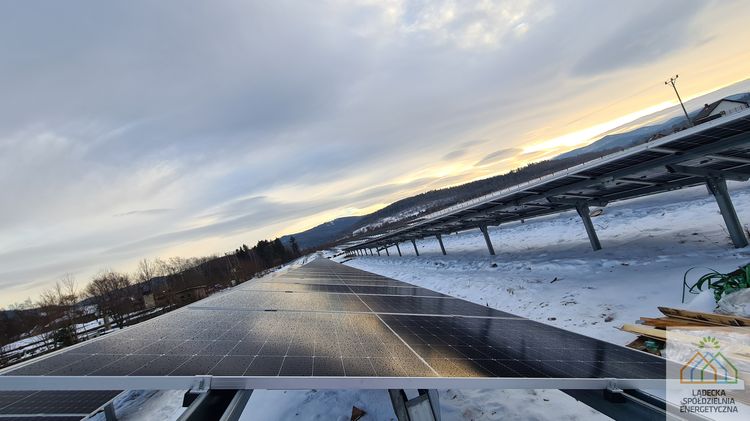
Cooperativa per le energie rinnovabili.
Paese:Descrizione:
Il coinvolgimento pubblico nello sviluppo delle fonti energetiche rinnovabili è un fattore chiave senza il quale gli investimenti nelle FER incontrano una grande resistenza pubblica. Mulini a vento - vibrazioni e rumore, parchi fotovoltaici - disturbo del paesaggio, impianti di biogas – cattivi odori. La percezione del disagio cambia radicalmente se i residenti locali vengono inclusi nei profitti derivanti dalle pale eoliche, dal fotovoltaico o dal metano. Un modo per abbattere la resistenza dei residenti locali è attraverso le cooperative energetiche.
Una cooperativa energetica è una forma basata sull’incontro tra popolazione locale, enti locali o imprese che operano nella zona per costruire nuovi, o combinare impianti di energia rinnovabile esistenti, utilizzando risorse disponibili localmente. Questa forma consente inoltre di ripartire i costi di investimento su un numero maggiore di entità. E offre così l’opportunità di costruire impianti più efficienti, fornendo energia a più consumatori.
All’inizio di febbraio 2024, in Polonia ci sono 26 cooperative energetiche, tutte che producono elettricità dal sole nei parchi fotovoltaici. Secondo le disposizioni della legge polacca sulle fonti energetiche rinnovabili, l'oggetto delle attività della cooperativa può essere la produzione di elettricità, biogas o calore, esclusivamente per il fabbisogno energetico proprio della cooperativa e dei suoi membri.
Capacità consentita:
- per l'elettricità - la capacità installata totale di tutti gli impianti FER consente alla cooperativa e ai suoi membri di coprire almeno il 70% del proprio fabbisogno e non supera i 10 MW,
- per il riscaldamento - la potenza termica totale non supera i 30 MW,
- per il biogas - la capacità annua di tutti gli impianti non supera i 40 milioni di m3.
Le cooperative energetiche sono stabilite sia nelle aree rurali che urbane.
Gli esempi includono la cooperativa energetica municipale in Polonia: Otwarty Jazdów a Varsavia, o la cooperativa energetica Michalowo situata vicino a Bialystok nel comune di Michalowo.
Comunicati stampa

Lisbona solare
Paese:Descrizione:
Tra il 2017 e il 2021, la città di Lisbona ha quadruplicato la capacità fotovoltaica cumulativa installata nei dispositivi, da 2 MW a 8 MW. Lisbona è la terza città europea con sole e buona esposizione solare sui tetti degli edifici, un'esposizione solare massima del 40% che equivale a un potenziale di generazione di energia pari al 95% del consumo elettrico della città nel 2016.
La Strategia solare di Lisbona mira a raggiungere 103 MW (178 W pro capite) di capacità fotovoltaica installata in città entro il 2030. Si tratta di un obiettivo importante da raggiungere per la neutralità climatica e per sradicare la povertà energetica entro il 2050.
La maggior parte dei pannelli solari a Lisbona è installata negli edifici pubblici. Alcuni implementati in edifici di precedente costruzione, come la Facoltà di Scienze dell'Università di Lisbona. Altri sono integrati nella progettazione architettonica e nella realizzazione di edifici, come la stazione ferroviaria di Campolide e l'edificio Solar XXI del Laboratorio Nazionale di Energia e Geologia. Si tratta di un edificio progettato integrando tecnologie attive e passive, per servire come dimostrazione tra gli architetti di un edificio ad alta efficienza energetica.
Nel settore privato spicca il complesso per uffici Natura Towers, due edifici che integrano pannelli fotovoltaici su tetti e facciate, oltre a un sistema di raccolta e stoccaggio dell'acqua piovana per l'irrigazione di un giardino verticale
La possibilità per i piccoli produttori di vendere l'energia che non consumano alla rete elettrica nazionale si è rivelata un incentivo per l'installazione di pannelli solari da parte di privati, nonché la concessione di sussidi per il loro finanziamento.
Un’altra importante possibilità è che i produttori-consumatori e solo i consumatori possano creare una comunità energetica condividendo la produzione e il consumo di elettricità. È in questa prospettiva che il Comune di Lisbona ha pianificato l'installazione di un impianto fotovoltaico a Carnide, con una capacità di 2 MW, per alimentare i propri edifici e l'edilizia sociale.
Comunicati stampa
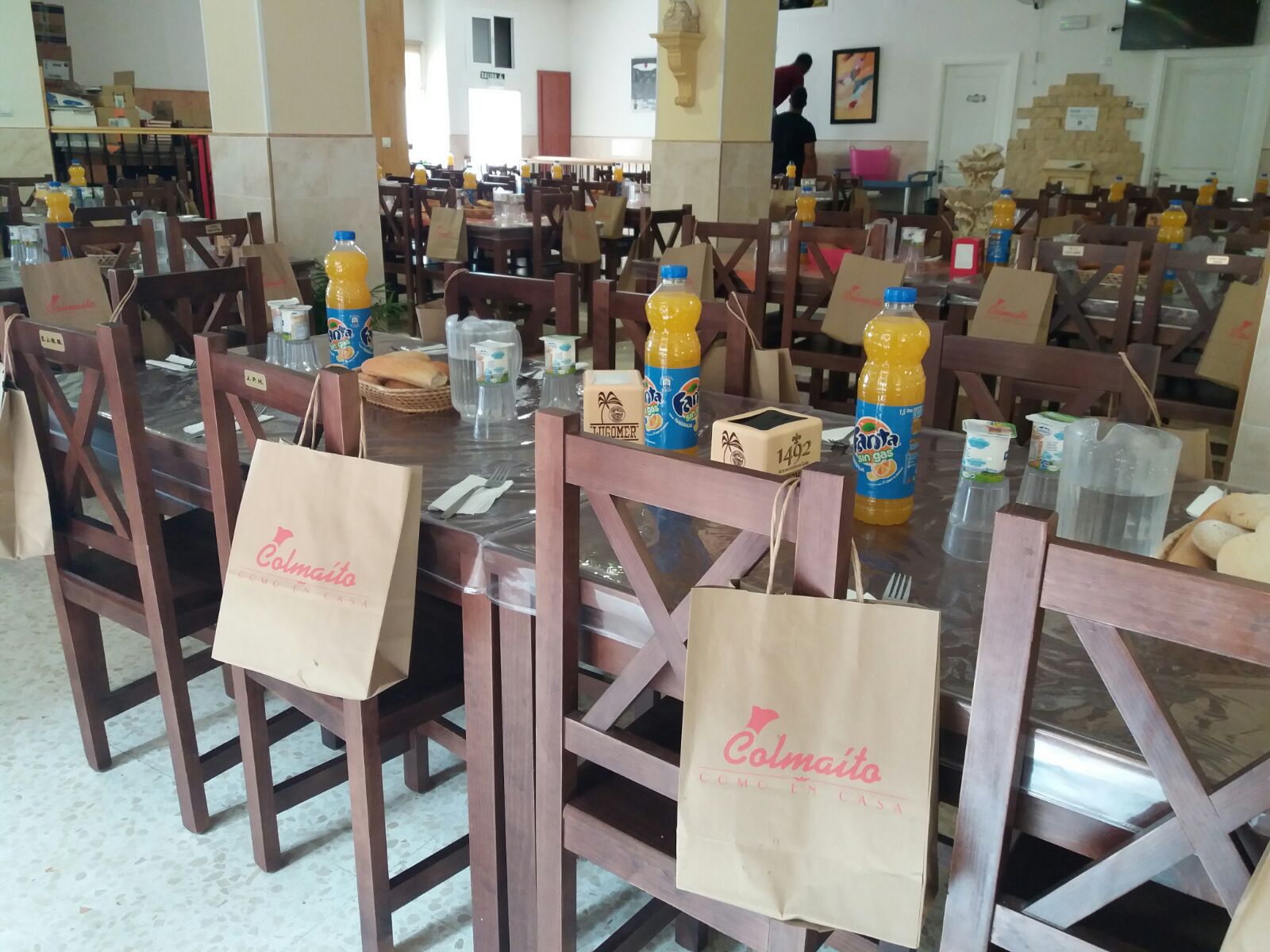
ÁNGELES MALAGUEÑOS DE LA NOCHE, un'associazione senza scopo di lucro per AIUTARE i più bisognosi.
Paese:Descrizione:
L'Associazione Malaga Night Angels è una straordinaria organizzazione senza scopo di lucro che si dedica ad aiutare le persone più vulnerabili di Malaga. È un'associazione libera, laica e apolitica che conta esclusivamente sulla collaborazione di volontari e su donazioni economiche, alimentari e risorse per svolgere la sua nobile opera nella lotta contro la fame.
L'organizzazione è nata nel 2007 a causa della crescente necessità di assistenza alimentare ai più bisognosi. Ogni giorno l'associazione fornisce colazione, pranzo e cena a circa 600 persone, che generalmente vivono per strada o in condizioni molto precarie, 365 giorni all'anno. L'associazione distribuisce quasi un milione di pasti all'anno, un risultato straordinario, e provvede anche ad altre necessità come vestiario, prodotti per l'igiene, coperte, ecc., quando le donazioni lo consentono.
Per contribuire a sradicare la fame nella provincia di Malaga, l'associazione riceve donazioni da privati, nonché da aziende e istituzioni locali. In precedenza, le persone bisognose dovevano attendere in lunghe file all'aperto per ricevere il cibo dall'associazione. Tuttavia, l’associazione ha lavorato instancabilmente per costruire una mensa per i poveri affinché queste persone potessero consumare il pasto sotto un tetto e in un luogo dignitoso.
La nuova mensa dei poveri è un edificio di 300 m², testimonianza del costante impegno dell'associazione a favore dei bisognosi. È stato inaugurato il 14 maggio 2016 e oggi è il luogo in cui l'associazione prepara e distribuisce cibo alle persone più svantaggiate che si rivolgono alla ONG. Gli sforzi dell'associazione sono davvero stimolanti e il suo impatto sulla comunità è incommensurabile.
Comunicati stampa
Appiattire le colline
Paese:Descrizione:
Lisbona è conosciuta come la città dei sette colli, il che può essere visto come un ostacolo alla diffusione dell'uso della bicicletta come mezzo di trasporto a basso costo in città.
Ma la cooperativa Drive Impact, con un progetto chiamato Ciclopes, ha superato questo ostacolo fornendo una formazione specifica a bambini e adolescenti nei quartieri sociali su come usare le biciclette. Si tratta di un progetto educativo che promuove la mobilità fluida e attiva, insieme all'inclusione sociale e all'integrazione delle persone nel territorio cittadino.
Il motto del progetto Ciclopes è “Appiattire le colline. Appiattire i pregiudizi. Appiattire le disuguaglianze”.
Se “Appiattire le colline” è lo slogan simbolico, “Appiattire i pregiudizi” è lo slogan chiave che fa riferimento a un aspetto centrale del progetto, decostruire il pregiudizio secondo cui le biciclette sono un mezzo di trasporto per i poveri. Pregiudizio naturalmente instaurato tra le popolazioni a basso reddito economico, come quelle dei quartieri sociali, che vedono nell'auto un oggetto privilegiato del desiderio di crescita socioeconomica.
Lo slogan “Appiattire le disuguaglianze” si riferisce anche a un altro aspetto fondamentale: dare agli adolescenti la possibilità di muoversi autonomamente fuori dai propri quartieri, utilizzando la bicicletta per scoprire il territorio cittadino.
Il progetto mette a disposizione biciclette che possono essere prese in prestito per determinati periodi di tempo, prevede formazione sul loro utilizzo e transito in città, nonché riparazioni sulla manutenzione delle biciclette.
Il progetto è operativo da dicembre 2020. In tre anni ha mobilitato più di 2.200 partecipanti, in più di 200 eventi, con circa 850 ore di attività.
Questo progetto è legato all'uso delle biciclette promosso a Lisbona. Nel 2017 si contavano 90,5 km di piste ciclabili; nel 2020, anno della Capitale Verde Europea, erano 125,8 km; a novembre 2023 i km sono 173 e la rete continua a crescere. Importante anche la flotta comunale di biciclette condivise, anch'essa in espansione: sono circa 1.600, parcheggiate in 130 postazioni. Il costo è: abbonamento annuale € 25, abbonamento mensile € 15, abbonamento giornaliero € 2.
Comunicati stampa

El Encinar, produzione e consumo di prossimità
Paese:Descrizione:
El Encinar è un'associazione senza scopo di lucro che dal 1993 si impegna con passione nella promozione e vendita di prodotti biologici, artigianali e alternativi a Granada, in particolare nel quartiere Zaidin, dal 1993. È un luogo di incontro tra produttori biologici locali e persone interessate nel provare questi prodotti e sostenere una forma di produzione alimentare rispettosa dell'ambiente.
L'Associazione El Encinar ha la sua sede nel cuore di Zaidín, dove sia i soci che i non soci possono fare acquisti durante l'orario lavorativo. Visitando questi locali, è possibile comprendere meglio cos'è El Encinar e chi sono. L'Associazione si propone di promuovere la produzione e il consumo di alimenti biologici e locali, di prodotti artigianali e alternativi, e di incoraggiare il consumo di prodotti stagionali.
Inoltre, si impegna a instaurare un rapporto più consapevole e responsabile con la terra, gli animali e le persone. Cerca di colmare il divario tra produzione e consumo promuovendo visite alle aziende agricole di agricoltori e allevatori, informando su come viene prodotto ciascun prodotto e sul suo costo reale. El Encinar offre ai suoi membri prodotti per la vita di tutti i giorni e si impegna a sviluppare un progetto di massimo beneficio sociale, autogestione e solidarietà.
L'obiettivo principale dell'associazione è quello di diventare un collegamento tra produttori e consumatori, avvicinando il mondo rurale a quello urbano e fornendo uno sbocco ai produttori biologici dell'Andalusia interessati a mantenere i loro prodotti nella loro terra. Con il suo costante impegno nella promozione di una vita sana e sostenibile, El Encinar è un vero gioiello per la comunità di Granada.
L'associazione vende prodotti locali e stagionali a prezzi equi stabiliti dai membri. La priorità viene data ai prodotti coltivati dai membri che sono stati coltivati in coordinamento con altri produttori, trasportati a breve distanza e conformi a criteri sociali come il commercio equo e condizioni di lavoro dignitose.
Comunicati stampa
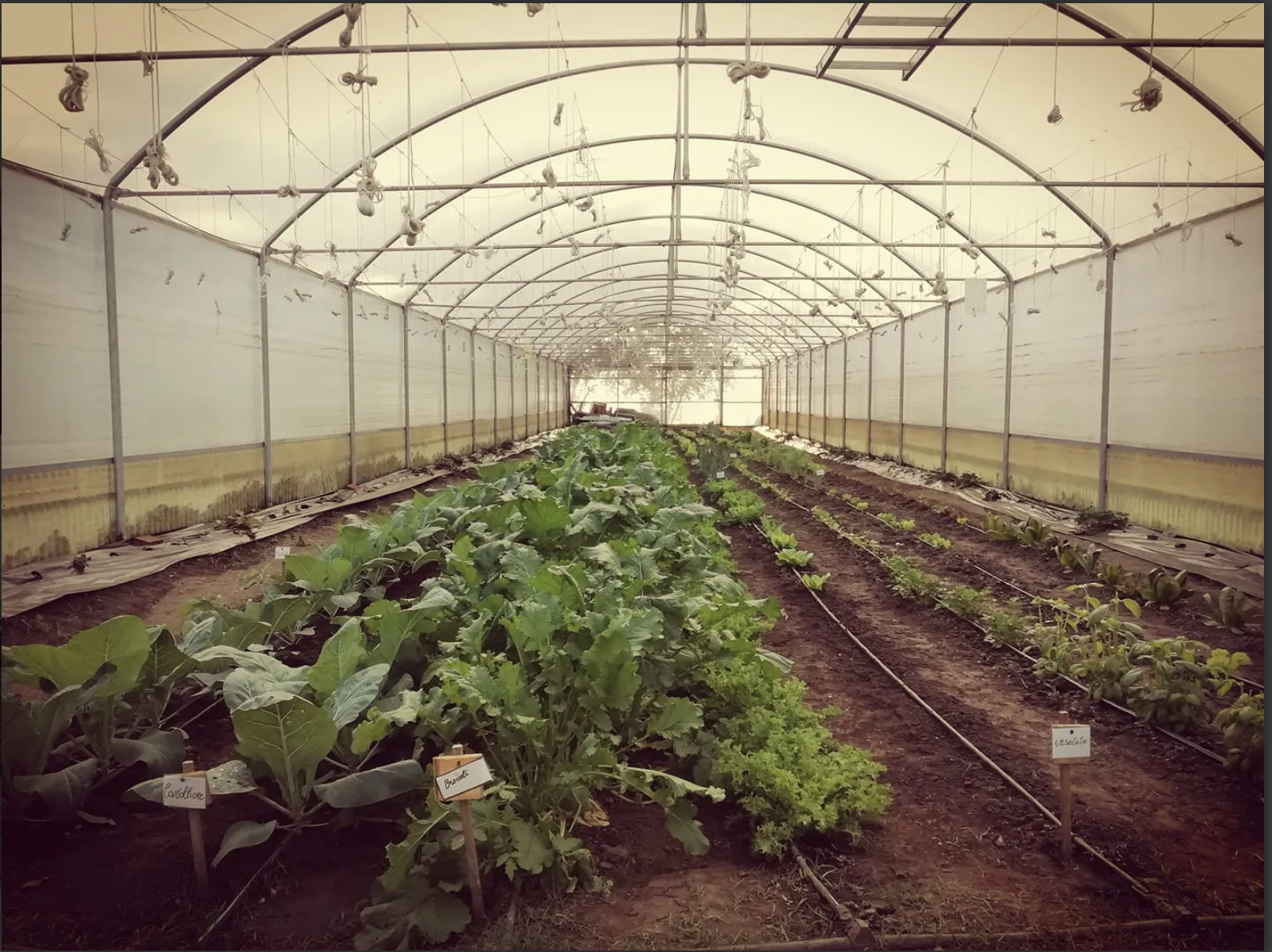
Caffè dell'orto
Paese:Descrizione:
Quando nel 2009 la Cooperativa Sociale "La Solidarietà" ha allestito la serra e creato il punto vendita, è iniziata la realizzazione di un progetto che ha creato le condizioni per la formazione e l'inclusione prima di persone disabili, poi di detenuti e misure alternative, nonché di giovani in condizioni di dipendenza patologica.
Il progetto coniuga un insieme di valori diversi che vanno dall'integrazione sociale allo sviluppo socio-sostenibile, fino alla valorizzazione dell'agricoltura sociale urbana come motore di coesione sociale. L'Orto si ispira alla teoria e alla pratica dell'agricoltura sociale e biologica; è dotato di una serra, di un orto all'aperto e di un punto vendita, il "Caffè dell'Orto", uno spazio di aggregazione diurno e serale che propone un intrattenimento alternativo senza slot machine. Viene promossa una cultura ecologica (produzione biologica e rigoroso rispetto delle regole della raccolta differenziata, nonché rifiuti quasi zero), oltre a un luogo di vendita diretta dei propri prodotti alle famiglie.
Grazie a questo continuo contatto diretto con il pubblico che frequenta il bar, l'orto, gli eventi culturali, le feste per bambini, le persone inserite nei programmi riabilitativi personalizzati riescono a sperimentare una continua interazione con la comunità, realizzando così la loro piena partecipazione a tutti gli aspetti della vita, non solo lavorativa, ma anche la crescita delle capacità relazionali.
Ad oggi, le attività si dividono in orticoltura, bar, soggetti svantaggiati (PTRI e Libera la Pena), fattoria didattica e centro estivo. Dal 2012, presso l'Orto è attiva una piattaforma di lavoro interistituzionale sull'esecuzione penale alternativa alla detenzione. La piattaforma si chiama "Partecipare alla libertà" e coinvolge l'Ufficio di Esecuzione Penale Esterna del Ministero della Giustizia, la Casa circondariale di Benevento, la Caritas diocesana di Benevento, il Comune di Benevento e diversi enti del terzo settore.
Grazie al funzionamento della piattaforma, tra il 2012 e il 2014, 34 persone in misura penale alternativa hanno già lavorato presso l'Orto. Nel dossier "Partecipare alla libertà: Stories of a Sentence Gone Well", pubblicato nel luglio 2014, si evidenzia che la recidiva delle persone coinvolte nella piattaforma, ossia le ricadute penali di persone che avevano già scontato misure penali, si è ridotta di oltre il 75%.
Oggi l'Orto è animato dal Consorzio di cooperative sociali e agricole "Sale della Terra". Il Consorzio intende investire in attività artigianali e permettere agli ospiti di diversi habitat sociali che stanno seguendo un proprio percorso di concretizzare una vera e propria attività lavorativa. Le attività agricole mirano a difendere i territori e a promuovere la coesione sociale, inserendo nel mondo del lavoro soggetti fragili e recuperando territori a rischio di emarginazione e abbandono.
Comunicati stampa
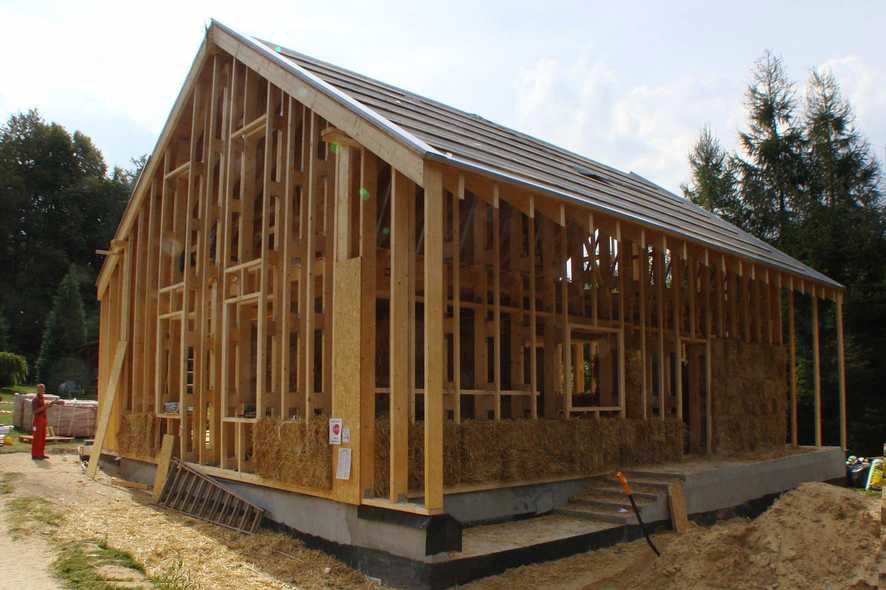
Case di paglia.
Paese:Descrizione:
La paglia viene utilizzata da secoli come materiale da costruzione. È stato utilizzato nelle coperture di paglia, per sigillare i muri nelle strutture in legno, per realizzare mattoni di paglia e argilla o per riempire le strutture delle case.
Un nuovo utilizzo - la costruzione con cubetti di paglia compressi (balle di paglia) - fu scoperto alla fine del XIX secolo con l'invenzione delle presse per la produzione di cubetti di paglia. Tuttavia, la tecnologia venne “riscoperta” solo negli anni ’70, quando cominciò a guadagnare popolarità come soluzione edilizia ecologica e sostenibile. In Francia esiste la casa più antica costruita con la tecnologia delle balle di paglia, in uso dal 1921, il che dimostra la longevità di questa tecnologia.
In Polonia la prima casa in balle di paglia è stata costruita nel 2000 e da allora sono stati costruiti almeno 350 edifici utilizzando questa tecnologia, alcuni dei quali vengono utilizzati come case ricreative o in affitto ai turisti. Va notato che i cubetti di balle di paglia molto spesso non sono la struttura portante delle pareti della casa, ma costituiscono il riempimento del telaio strutturale, solitamente in legno. Una tale applicazione significa che la costruzione di una casa in balle di paglia può essere eseguita in gran parte da soli, previa acquisizione delle conoscenze necessarie, poiché il ruolo chiave è l'accuratezza dell'esecuzione e l'evitamento di errori.
La tecnologia delle balle di paglia ha trovato applicazioni come strutture in legno di tamponamento, pannelli prefabbricati in legno-paglia o strutture portanti. Inoltre è possibile isolare tetti, intradossi e solai ventilati, rendendo la tecnologia delle balle di paglia una soluzione versatile.
L'utilizzo della paglia pura come materiale da costruzione senza l'aggiunta di "prodotti chimici da costruzione" si traduce in un basso livello di lavorazione e un impatto benefico sull'ambiente. La paglia è una materia prima rinnovabile, locale e biodegradabile al 100%. Inoltre, l'eccellente isolamento della paglia, sia termico che acustico, fa sì che le case costruite con la tecnologia delle balle di paglia raggiungano elevati standard di efficienza energetica e valore per gli acquirenti. Vale la pena notare che la tecnologia ha anche il potenziale per l’uso nell’isolamento degli edifici passivi, come dimostrano i progetti certificati in Germania e Austria.
La tecnologia delle balle di paglia sta attualmente riguadagnando popolarità come soluzione ecologica ed efficiente nell’edilizia in tutto il mondo. I suoi vantaggi, come il rispetto dell’ambiente, l’efficienza energetica, la durata e la varietà di applicazioni, lo rendono un’interessante alternativa ai metodi di costruzione tradizionali.
Per la costruzione di una casa nell'insediamento turistico sul fiume Sona, tra l'altro, sono state utilizzate balle di paglia secondo i principi della costruzione naturale (intonaco di argilla e calce, materiali isolanti naturali, mattoni e piastrelle di demolizione, legno di un vecchio fienile e fienile, fieldstone).
Comunicati stampa
UpFarming – Orticoltura verticale
Paese:Descrizione:
UpFarming è un'organizzazione non governativa che promuove l'agricoltura urbana attraverso una varietà di progetti innovativi, come i sistemi idroponici e aeroponici. Con un approccio collaborativo e tecnologico, l’organizzazione realizza principalmente orti urbani verticali per coltivare cibo fresco e sano in spazi limitati. Parallelamente, sviluppa diverse iniziative per promuovere la sostenibilità e la sicurezza alimentare nelle città, come laboratori e altre attività educative.
Uno degli orti verticali realizzati dall'organizzazione si trova nel carcere di Torres Novas ed è coltivato da circa 40 detenuti e dalle guardie carcerarie. L'obiettivo è migliorare la dieta dei detenuti e sostenere le famiglie del quartiere attraverso la distribuzione di cibo. I detenuti ottengono una certificazione professionale in orticoltura che aiuterà il reinserimento sociale dopo aver scontato la pena.
L'organizzazione è presente anche ad Alvalade, Lisbona, presso il Parco dell'Orticoltura Aquilino Ribeiro Machado (ex presidente del Consiglio Comunale di Lisbona), dove cerca di incoraggiare il coinvolgimento dei consumatori di tutte le età nella pratica dell'intero processo di coltivazione dei prodotti alimentari. che produce benefici per il benessere psicologico individuale e la coesione sociale.
UpFarming ha implementato e co-gestisce un progetto chiamato “Dalla scuola alla tavola”, che è un sistema di produzione olistico composto da un orto orizzontale, un orto verticale, un anello agroforestale e una stazione di compostaggio presso Basic Scholl Dom Luís da Cunha. Il cibo prodotto nella scuola viene consumato dagli abitanti del quartiere e il processo di coltivazione viene utilizzato come strumento pedagogico trasversale e specifico, contribuendo al benessere della comunità scolastica e alla formazione di una generazione più consapevole questioni ambientali e alimentari.
Comunicati stampa
Giardino di permacultura
Paese:Descrizione:
La permacultura è una coltivazione armoniosa e sostenibile, un luogo che utilizza principi olistici e naturali per progettare, creare e mantenere un ecosistema vegetale. Permacultura, nome abbreviato di cultura permanente (coltivazione sostenibile), è una filosofia di progettazione olistica e completa che mira a mantenere una coltivazione sostenibile che rifletta i modelli naturali e i processi sostenibili presenti in natura.
I principi fondamentali di un giardino di permacultura includono:
Diversità della vegetazione: un giardino di permacultura utilizza una diversità di specie vegetali, che promuove un equilibrio naturale nell’ecosistema. La combinazione di piante con funzioni e proprietà diverse rafforza la resistenza del giardino ai parassiti e alle malattie.
Conservazione dell’acqua: un giardino di permacultura è progettato pensando all’uso efficiente dell’acqua. L'uso di tecniche di ritenzione idrica, come la pacciamatura con paglia o foglie, crea le condizioni per la raccolta e il mantenimento dell'umidità nel terreno.
Manutenzione del suolo: la permacultura fornisce un terreno sano come elemento chiave di un giardino sostenibile. L’uso di fertilizzanti naturali, il compostaggio e l’evitamento di pratiche faticose come impastare o trasportare la biomassa contribuiscono al mantenimento a lungo termine di un terreno ricco di sostanze nutritive e ben strutturato.
Agricoltura integrata: la permacultura promuove metodi agricoli sostenibili, come piantare colture che lavorano insieme e formano relazioni reciprocamente vantaggiose. Questo approccio riduce al minimo la necessità di interventi artificiali e supporta i processi di crescita naturale.
Protezione della biodiversità locale: un giardino di permacultura sostiene la biodiversità locale attirando una varietà di specie di piante, insetti e animali. Ciò favorisce il mantenimento dell’equilibrio naturale dell’ecosistema.
Educazione e comunità: i giardini di permacultura hanno spesso una funzione educativa, promuovendo i principi di una vita sana e incoraggiando la partecipazione della comunità. Gli orti comunitari possono fungere da luogo in cui condividere conoscenze, competenze e risorse.
Operando secondo i principi della permacultura, i giardinieri non solo beneficiano dei loro raccolti, ma apportano benefici anche all’ambiente e alla comunità locale.
Le colture in permacultura possono soddisfare in gran parte il proprio fabbisogno alimentare, le eccedenze possono essere vendute e fornire un reddito aggiuntivo. Oltre a ciò, accanto agli orti di permacultura vengono spesso allestite aziende agrituristiche che forniscono agli ospiti un reddito derivante dall'affitto dei locali, dal pernottamento e dalla prima colazione e da laboratori didattici a pagamento sull'agricoltura biologica, sulla lavorazione di frutta e verdura, sulla raccolta ed essiccazione delle erbe, sulla coltivazione di erbe aromatiche. medicina, cosmetici naturali, artigianato, nonché escursioni nella natura e altre attività aggiuntive che possono fornire sostentamento ai proprietari di fattorie di permacultura.
Una delle tante fattorie di permacultura in Polonia è gestita dall'autrice di permacultura, educatrice ed esperta di permacultura Monika Podsiadła nel villaggio di Podlodek nel comune di Michów, Voivodato di Lubelskie (Polonia orientale). Chiunque, dopo un'adeguata preparazione e acquisizione di conoscenze, può avviare il proprio giardino di permacultura senza troppi problemi e investimenti, anche in un piccolo giardino o orto in città, o ancor di più in campagna.
Comunicati stampa
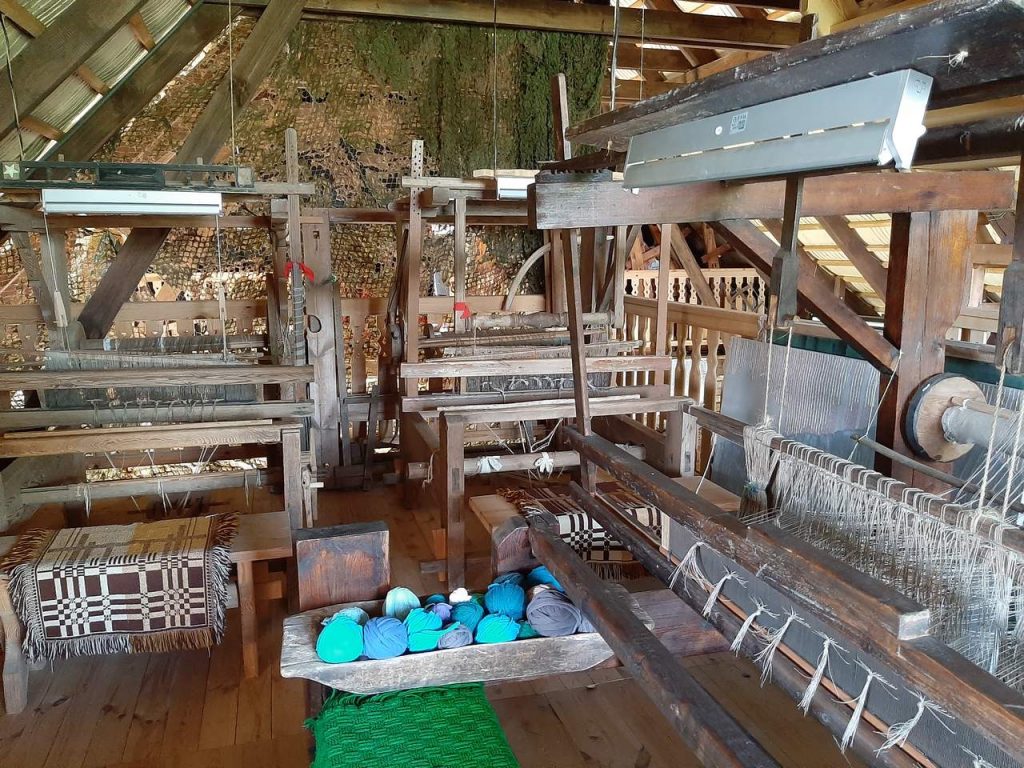
Agriturismo, ecoturismo, ecomusei.
Paese:Descrizione:
Agriturismo, ecoturismo, musei viventi, ecomusei: nomi familiari a chiunque sia interessato a riposare nella natura, in modo da non danneggiarla o almeno ridurre al minimo i danni ecologici.
Così scrivono del loro posto i proprietari del sito ecoturistico "Na Karczaku", situato nella valle del fiume Biebrza, la più grande zona umida dell'Unione Europea e il più grande parco nazionale della Polonia in termini di superficie:
"Siamo consapevoli che ogni attività turistica ha un impatto sull'ambiente, per questo vorremmo, con il vostro aiuto attraverso il nostro comportamento ecologicamente consapevole nell'Agriturismo e nell'Ekomuseo "Na Karczaku", così come sui sentieri di Biebrza, ridurre tale impatti negativi e potenziare quelli positivi. Ci impegniamo a garantire che la nostra azienda agricola, dove riceviamo ospiti, così come le nostre attività, in primo luogo non arrechino danni, favoriscano la conservazione e infine ricreino o creino condizioni per una biodiversità ricca ed elevata: qualità dell'ambiente naturale, cura delle tradizioni, delle emozioni positive e delle relazioni umane. Vogliamo raggiungere questo obiettivo suscitando la sensibilità dei nostri ospiti verso la natura, la sua bellezza e i suoi benefici, promuovendo uno stile di vita ecologico, il patrimonio naturale e culturale della regione. , incoraggiando atteggiamenti di consumo responsabile e adottando misure attive per la natura e la cultura e vivendo in accordo con le proprie convinzioni interiori."
Queste parole sono allo stesso tempo la risposta alla domanda "cos'è l'ecoturismo", che fornisce entrate aggiuntive nelle zone rurali, prendendosi cura dell'ambiente e della cultura locale. L’ecoturismo non è solo relax nella natura, ma anche attività come:
- laboratori per imparare a tessere su telai,
- produzione di cosmetici naturali utilizzando erbe locali,
- incontri con erbe ed erboristeria,
- laboratori di artigianato locale e di artigianato,
- laboratori sulla costruzione di case ("alberghi") per insetti utili,
- incontri con lo stile di vita ecologico e il giardinaggio naturale,
- realizzazione e possibilità di acquistare prodotti locali,
- osservazione della vita ordinaria in campagna.
L'agriturismo in Polonia è una forma sviluppata di ricreazione, che attira turisti sia dalla patria che dall'estero. La Polonia, ricca di paesaggi pittoreschi, tradizioni rurali e diversità naturale e culturale, sta diventando un luogo perfetto per gli appassionati di ecoturismo.
L'agriturismo polacco si caratterizza per la diversità della sua offerta. I turisti possono scegliere tra aziende agricole situate in montagna, in riva al mare, lungo fiumi e laghi o nei boschi. Questa è un'opzione ideale per chi cerca la pace e il contatto con la natura, così come per coloro che vogliono trascorrere del tempo attivamente.
L'agriturismo in Polonia sta guadagnando popolarità anche tra gli stranieri che cercano esperienze originali, lontano dal turismo di massa nei centri turistici affollati. Vale la pena notare che l'agriturismo sostiene lo sviluppo delle aree rurali, stimolando l'economia locale.
Comunicati stampa

ReFood – Stop agli sprechi, nutri le persone
Paese:Descrizione:
ReFood è un progetto che consiste nel raccogliere eccedenze alimentari, che altrimenti andrebbero sprecate, e distribuirle a individui e famiglie in situazioni vulnerabili, attraverso un approccio comunitario e volontario. La lotta alla povertà e allo spreco alimentare promuove contemporaneamente la sostenibilità ambientale e la coesione sociale. Si tratta di un'iniziativa di portata nazionale, focalizzata sulle aree urbane, che ha iniziato a essere replicata a Madrid (Spagna) e Milano (Italia), con la prospettiva di essere replicata anche in Brasile e Virginia (USA).
Il funzionamento di ReFood si basa su una rete di circa 60 centri e 7500 volontari che raccolgono i rifiuti alimentari da circa 2500 partner, tra cui ristoranti, panifici e supermercati. I volontari garantiscono inoltre la conservazione e la distribuzione del cibo, in modo adeguato e sicuro, ai circa 6800 beneficiari registrati nella rete, fornendo accesso a pasti nutrienti e di qualità.
Ogni mese il progetto salva 150.000 pasti dai rifiuti, contribuendo a ridurre l’impatto ambientale dei rifiuti. Ogni mese, ReFood evita di mandare in discarica 1.000 tonnellate di rifiuti organici, mitigando il rilascio di gas serra associati ai rifiuti.
ReFood promuove inoltre l’inclusione sociale fornendo cibo nutriente a persone e famiglie che si trovano in una condizione svantaggiata, contribuendo a combattere la povertà e la fame. Il progetto garantisce anche la sostenibilità finanziaria attraverso l’efficienza economica, poiché i pasti vengono riscattati a 10 centesimi ciascuno e la comunità contribuisce con il proprio tempo, cibo o altro sostegno materiale.
Un altro importante vantaggio di ReFood è la consapevolezza del pubblico sulle problematiche legate allo spreco alimentare e sull’importanza di adottare pratiche di consumo e produzione sostenibili. Educando la comunità sull’impatto negativo dello spreco alimentare sull’ambiente e sulla società, il progetto ispira cambiamenti comportamentali e promuove uno stile di vita più consapevole e responsabile.
Comunicati stampa

SOS Rosarno - Arance contro la mafia
Paese:Descrizione:
SOS Rosarno è un'Associazione di Promozione Sociale che riunisce piccoli agricoltori, lavoratori immigrati, attivisti, nonché piccoli artigiani e operatori del turismo responsabile.
Lo scopo dell'associazione è quello di "Promuovere e praticare la cultura della solidarietà, del rispetto reciproco e della non violenza, perseguire l'uguaglianza e la giustizia sociale. Operare per il superamento di ogni pregiudizio o barriera, sia essa culturale, sociale, burocratica, economica o fisica, che possa rappresentare una fonte di qualsiasi forma di disparità, discriminazione, intolleranza, xenofobia, razzismo, violenza, e ostacolo a una vera integrazione sociale e culturale degli individui, indipendentemente dalla provenienza, dallo status sociale ed economico, dalla razza, dal sesso, dal credo religioso e dall'appartenenza politica".
L'attività principale è l'organizzazione della produzione di agrumi e olive secondo i criteri dell'agricoltura biologica e con la garanzia di un'occupazione regolare dei lavoratori.
L'associazione non svolge attività di intermediazione commerciale, ma solo attività di coordinamento e promozione, in particolare con i Gruppi di Acquisto Solidale e le Botteghe EquoSolidali in tutta Italia, assicurandosi che i produttori aderenti rispettino tutti i principi e le condizioni del progetto e mettendo direttamente in contatto i gruppi di acquisto con i produttori.
Attraverso la vendita dei prodotti a un prezzo equo - cioè superiore a quello imposto dal mercato della Grande Distribuzione Organizzata - si garantisce un'equa retribuzione ai lavoratori e un giusto compenso ai produttori, creando un piccolo esempio vivente di una possibile alternativa economica per la Calabria e in particolare per Rosarno, basata su criteri di sostenibilità, equità e convivialità.
Al momento, l'unica fonte di finanziamento è la vendita dei prodotti ai Gruppi di Acquisto Solidale, destinando una parte del prezzo al finanziamento della gestione dell'associazione e un'altra parte al finanziamento delle attività di sostegno, promozione dei diritti e, più in generale, di solidarietà verso i lavoratori stagionali che, a migliaia ogni autunno-inverno, affollano la piana di Gioia Tauro.
Attualmente coinvolge 56 lavoratori liberati dalla schiavitù della mafia, provenienti da 10 nazioni diverse e una rete di 100 piccoli e micro produttori locali.
Comunicati stampa
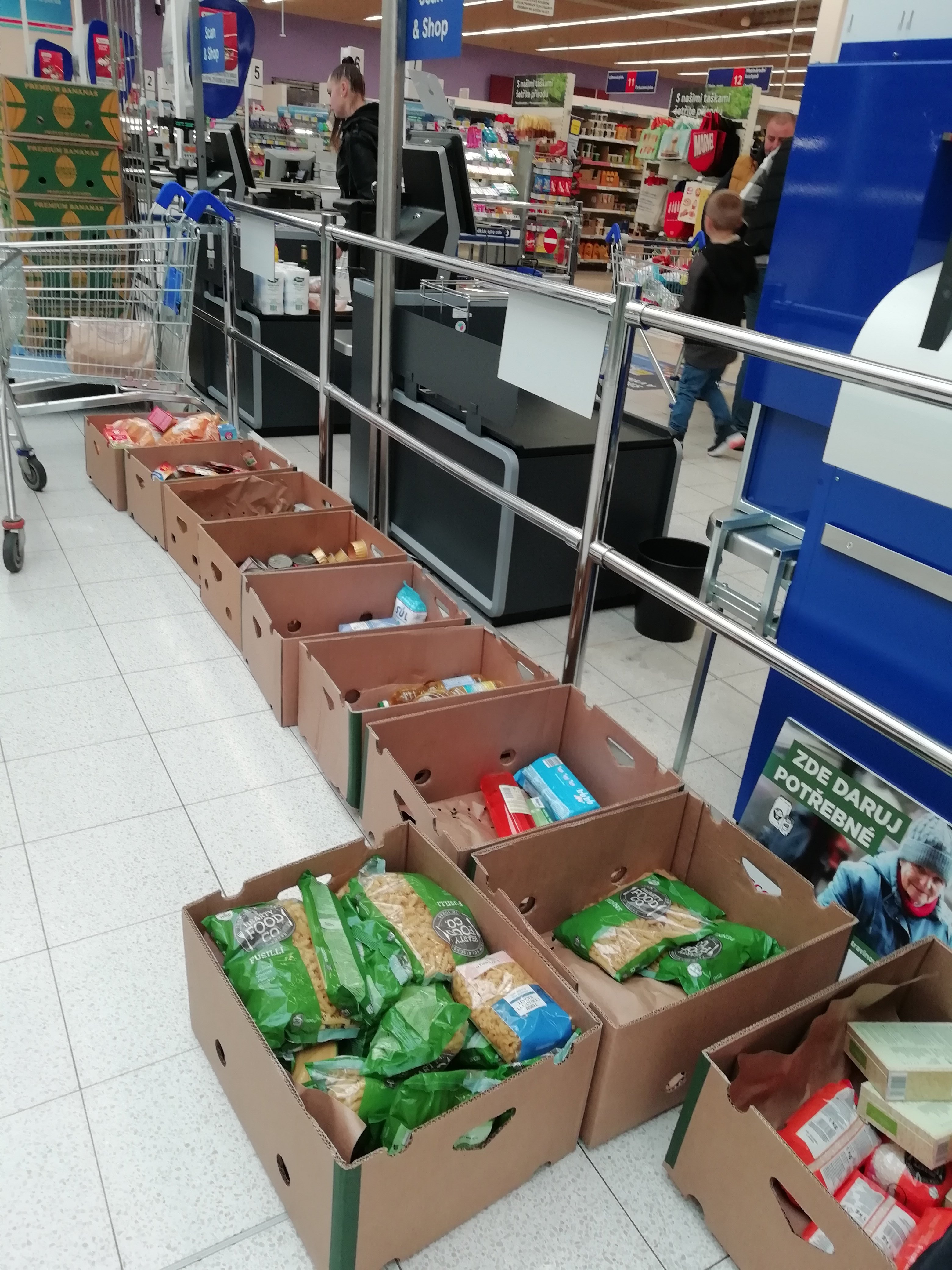
Sostegno alimentare ai gruppi socialmente deboli nella Repubblica Ceca
Paese:Descrizione:
Nella Repubblica Ceca esiste la Federazione ceca delle banche alimentari che copre tutte le banche sub-alimentari. Li rappresenta a livello nazionale e transnazionale e gestisce un magazzino centrale. Le banche alimentari sono organizzazioni senza scopo di lucro che raccolgono cibo e lo distribuiscono ai clienti di organizzazioni di beneficenza. Aiutano le persone bisognose ad avere cibo, soprattutto gli anziani, le famiglie con bambini, le madri single e i senzatetto.
Le banche alimentari forniscono principalmente cibo a chi ne ha bisogno attraverso le organizzazioni no-profit dei clienti, nonché attraverso punti vendita di aiuti alimentari. Le banche alimentari si approvvigionano di cibo dalle catene alimentari, dalle raccolte alimentari, dal Programma europeo di assistenza alimentare e materiale, dai piccoli produttori di frutta e verdura, dai produttori alimentari o dal pubblico in generale. A Pardubice, il Banco Alimentare è stato istituito nel 2015. Il progetto è stato cofinanziato dall’UE nel Programma Operativo Occupazione plus ed è stato implementato come parte del raggiungimento dell’obiettivo sociale.
Molte aziende e organizzazioni sono partner del progetto, ad es. LIDL, Makro, Kaufland, Košík.cz, Rohlík.cz, Charita Repubblica Ceca, Ministero dell'Agricoltura e altri. Molte organizzazioni sono membri e acquirenti, principalmente organizzazioni senza scopo di lucro, ad es. la Carità Parrocchiale Chrudim, che aiuta le persone in difficoltà e si prende cura di chi ha bisogno di cure molto esigenti.
Un'altra organizzazione no-profit a Chrudim è SOPRE CR o.p.s., che collabora con il Banco Alimentare Di Pardubice, z.s. e ha il suo punto di consegna di assistenza alimentare. L'organizzazione è stata fondata nel 2007 e il primo servizio sociale è stato il Dormitorio per persone senza alloggio. Il gruppo target sono gli anziani abbandonati, i genitori single, le famiglie in crisi, i senzatetto, le persone con disabilità psichiche e fisiche che hanno entrate finanziarie limitate. Due volte all'anno partecipano alla Colletta alimentare nazionale, ritirano la spesa dal grande magazzino, la trasportano al punto di raccolta e aiutano nella consegna. L'organizzazione collabora con il Dipartimento per gli affari sociali del Comune di Chrudim, Chrast e Skuteč.
Comunicati stampa
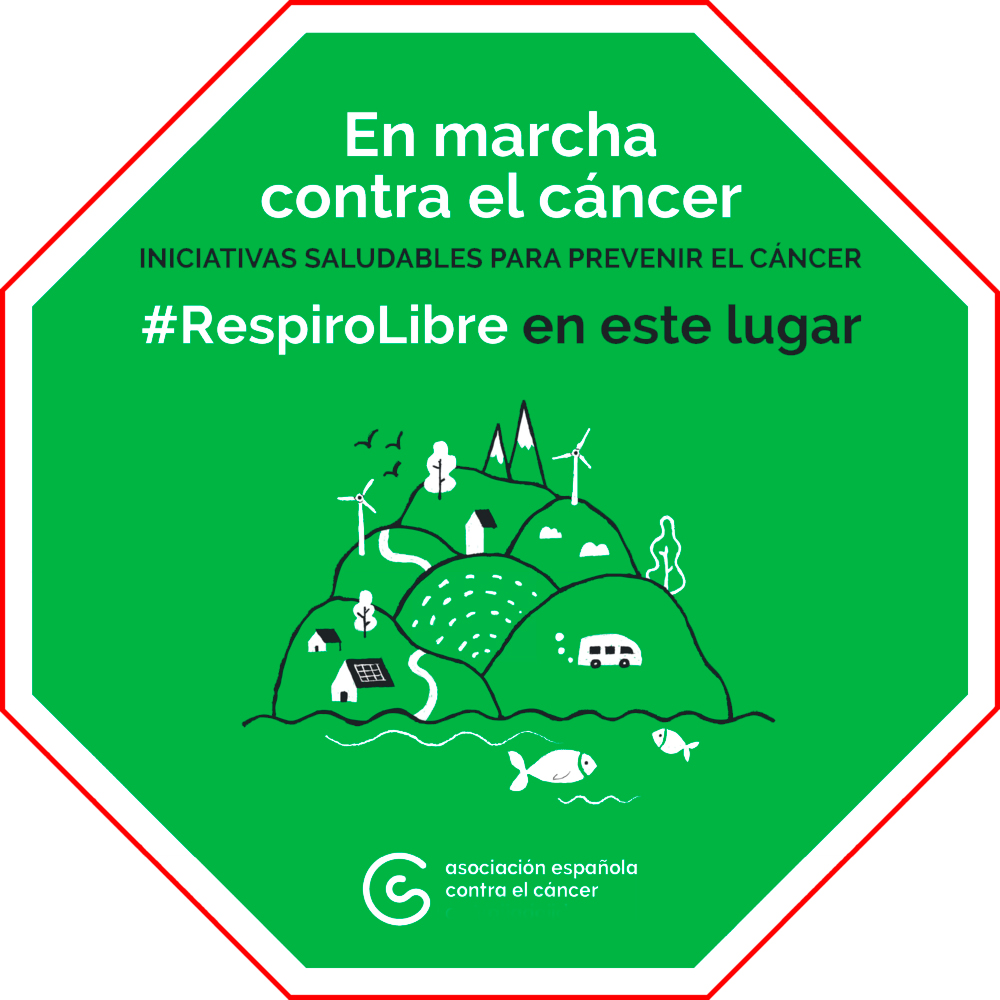
Il primo parco per non fumatori a León
Paese:Descrizione:
Il Comune di San Andrés del Rabanedo sta aprendo la strada nella provincia di León realizzando il primo "Spazio senza fumo", il Parco Antonio García Valladares, nell'aprile 2023. Questa iniziativa mira a creare ambienti liberi dall'esposizione al fumo dannoso del tabacco.
Dal 2021 l'Associazione contro il cancro lavora per eliminare il fumo di tabacco dagli spazi pubblici. Quasi 300 spazi con un massimo di 2,5 milioni di visitatori sono stati dichiarati senza fumo in tutta la Spagna.
Questa iniziativa consiste nel creare ambienti esenti dall'esposizione al fumo dannoso di tabacco, tradizionale o elettronico, negli spazi aperti ad uso pubblico e collettivo, indipendentemente dal fatto che siano di proprietà pubblica o privata. L’obiettivo è, quindi, creare ambienti salubri per tutelare la salute e prevenire le malattie, siano esse cancro o altre malattie respiratorie o cardiovascolari.
Per garantire il successo dell'attuazione, i membri dell'Associazione spagnola contro il cancro hanno fornito formazione e sensibilizzato alcuni lavoratori del Consiglio comunale. Ciò consentirà loro di comunicare l’importanza di rispettare questo spazio senza fumo, poiché sono loro che hanno il maggior contatto con i cittadini. Ciò è in linea con la Strategia Comunale per la Promozione della Salute.
A questo primo spazio senza fumo nel comune ne seguiranno altri in località ad alta densità di residenti.
Comunicati stampa
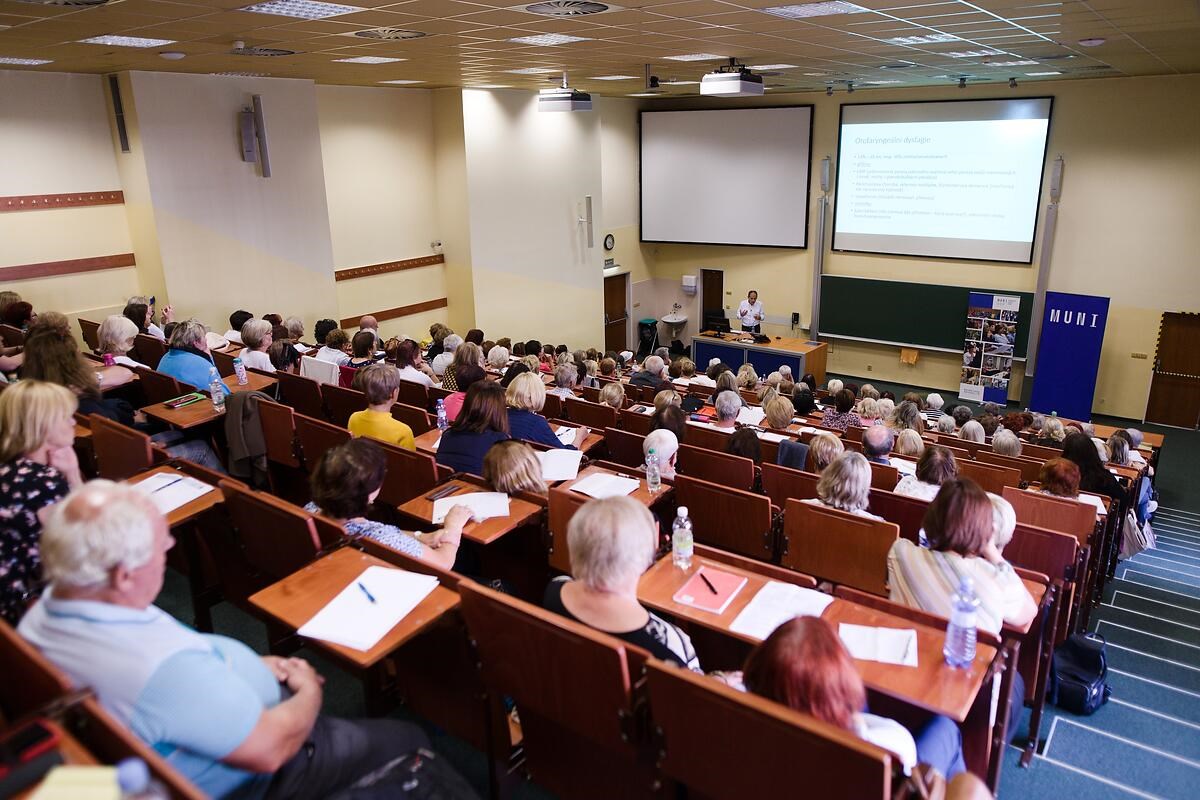
Lifelong learning opportunities in the Czech Republic
Paese:Descrizione:
The University of the Third Age (U3A) is a lifelong learning programme that focuses on the mental activities of older people. The main mission is to provide university information , knowledge and skills to people in the post-productive age and, above all, to take advantage of intergenerational learning. With the help of the programs, seniors have the opportunity to meet with the latest knowledge in history, medicine, medicine, culture and the like in a qualified and university-level manner. Thanks to this education, seniors can maintain mental freshness, mental well-being, gain new information, and most importantly, their studies will help prevent them from becoming socially isolated.
Lifelong learning programmes of the University of the Third Age are usually intended for applicants who have reached retirement age and have secondary education with a school-leaving examination. The university also allows all war veterans who fought for our freedom to enroll in U3A programs without proof of secondary education. People often reach retirement age in good physical and mental condition, they are interested in new knowledge, what is happening around them and want to develop further. Despite their age, they have their own life goals that they want to fulfill.
One of many examples is the Czech University of Life Sciences Prague, which provides information on the economic, agronomy, forestry-economic, agricultural economics of the tropics and subtropics, as well as education. The study is not a substitute for comprehensive higher education, but graduates receive a certificate of completion. The topics provide general, hobby and non-professional education at the university level to older people.
Participants do not have the status of a student, but they can use the library, computer lab, projection laboratory, swimming pool, gym, etc. throughout their studies.
Lecture cycles are usually 4 semesters long. There are 12 lectures in each semester, which are supplemented by excursions and workshops. At the end, the seniors will receive a certificate at the graduation ceremony in the school auditorium. Participants must pay a small tuition fee, but also have a minimum set attendance and write regular tests. After graduation, seniors can continue on to other educational programs.
Similar programmes are also offered by Charles University and some other universities.
The city of Chrudim also cooperates with the Czech University of Life Sciences Prague. The Municipal Library provides registration, teaching facilities, transport to excursions, and also library staff accompany graduates to the award ceremony.
Comunicati stampa

Giovani per gli anziani
Paese:Descrizione:
L'associazione “Let’s go for a trip!” è un'organizzazione senza scopo di lucro fondata nel 2014 e implementa attività ricreative per gli anziani di età superiore ai 65 anni. Come dicono loro stessi: "La nostra missione è una lotta spietata contro la solitudine degli anziani e uno sforzo per sostituirla con la gioia, conoscendo nuovi posti e amici di tutte le generazioni".
Durante il periodo di attuazione, l'associazione è entrata in contatto con almeno 5.000 anziani organizzando attività ricreative legate ad attività educative. Presentano al grande pubblico la questione delle generazioni più anziane, collaborano con altre organizzazioni senza scopo di lucro e organizzano eventi legati ad attività educative private. Concentrano le loro attività principalmente sulla prevenzione e sull'educazione della popolazione anziana.
Un'attività molto popolare è l'organizzazione di numerose gite interessanti nei dintorni. I viaggi sono di una giornata, quindi gestibili per tutti gli interessati e, soprattutto, convenienti e sicuri. Sono sempre perfettamente assicurati da guide esperte e accompagnatori medici tra le fila dei giovani volontari. Spesso partecipano anziani con varie limitazioni di salute, mobilità ridotta o utenti di sedia a rotelle.
Con l'aiuto dei ragazzi tutti possono farlo e grazie a queste attività vedranno posti che sicuramente non conoscevano.
Nell'ambito delle attività dell'associazione, gli anziani incontrano non solo i loro coetanei, i volontari, ma anche i bambini in età prescolare, durante attività intergenerazionali. Questi incontri approfondiscono i legami sociali e creano le condizioni per il riavvicinamento intergenerazionale.
Un altro ambito che aiuta molto gli anziani è il sostegno alla propria autosufficienza. Questi vengono regolarmente informati nel campo dei servizi sociali, segnalando i diversi pericoli legati alle nuove tecnologie, ma anche sullo stile di vita sano e sulle attività adeguate offerte.
Ogni anno l'associazione organizza un festival Senior. In media lo visitano circa 1.000 anziani. Di queste, almeno la metà viene raccolta dall'associazione stessa da molte regioni diverse, comprese persone con disabilità mediche.
Le attività dell'associazione sono sostenute da numerosi partner e donatori volontari. Partner importanti sono ad esempio l'UE, la MAS Chrudimsko, la città di Chrudim, la città di Chrast, Ecomonitor, la regione di Pardubice ed altri.
Comunicati stampa
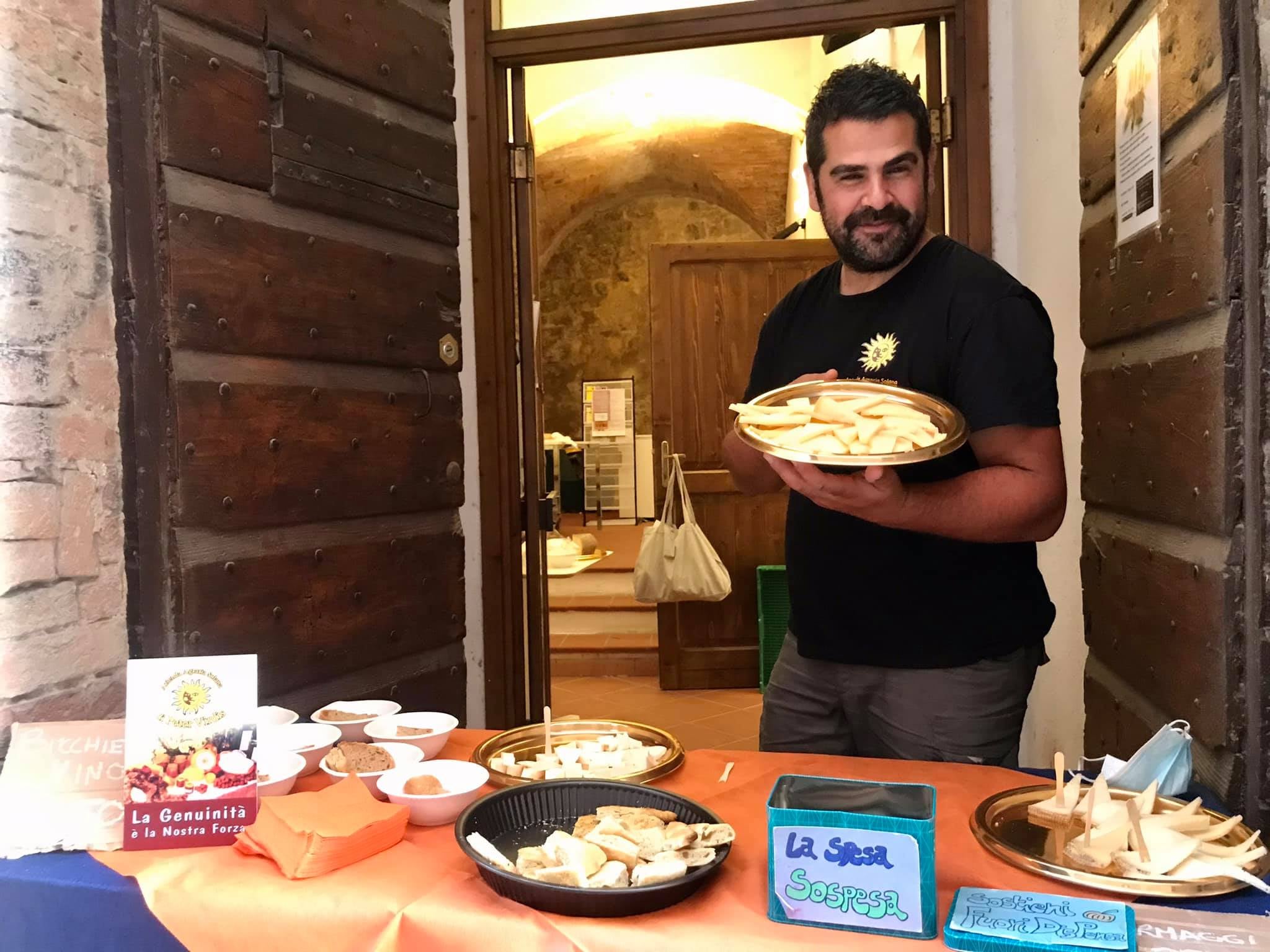
Fuori di Zucca
Paese:Descrizione:
Fuori di Zucca è un'associazione di promozione sociale (APS) del centro storico di Perugia che nasce nel 2016 da un'idea della ONG Tamat realizzata in collaborazione con l'associazione Fiorivano le Viole. L'obiettivo di Fuori di Zucca è quello di promuovere il concetto di sovranità alimentare favorendo il rapporto diretto produttore-consumatore, il rispetto e la giusta retribuzione di chi lavora nella filiera, le produzioni etiche e sostenibili, la condivisione di informazioni sul rapporto cibo-salute e la cooperazione sociale.
L'attività principale che l'associazione svolge attualmente è quella del Gruppo di Acquisto Solidale (G.A.S.). "I G.A.S. sono gruppi di persone che si organizzano per acquistare insieme prodotti alimentari o di uso quotidiano. Gli acquisti avvengono secondo il principio della solidarietà, che li porta a preferire produttori piccoli e locali, rispettosi dell'ambiente e delle persone, con i quali instaurano un rapporto diretto." (http://www.economiasolidale.net/content/cose-un-gas).
G.A.S. è stato avviato nel 2016 da un gruppo di cinque persone con l'obiettivo di creare una piccola comunità che acquistasse in modo consapevole e alternativo. Il primo passo è stato quello di definire la filosofia del G.A.S. e stabilire i requisiti necessari per individuare i produttori da contattare. Di seguito vengono riassunti i principi cardine su cui si basa il Gruppo d'Acquisto:
- il gruppo è gestito direttamente dai soci consumatori e non dai produttori anche se il rapporto produttore/consumatore è diretto e basato sulla fiducia reciproca, sul dialogo costante e sulla partecipazione attiva alla vita del GAS;
Il GAS di Fuori di Zucca risponde all'esigenza di reperire, anche nel centro storico di una città logisticamente complessa come Perugia, prodotti "sani" provenienti dalla vicina campagna. La gestione collettiva dei volontari e la scelta di non operare alcun ricarico sui prodotti permette al GAS di essere accessibile anche dal punto di vista economico, contrastando l'idea, sempre più diffusa dalla Grande Distribuzione Organizzata, che "biologico" significhi "costoso" e riservato alle classi sociali più abbienti.
Dal 2018 Fuori di Zucca ha inoltre avviato l'iniziativa "Fuori Dispensa" attraverso la quale garantisce, grazie al contributo di soci e produttori, un sostegno alle persone in difficoltà fornendo la spesa alimentare settimanale con i prodotti del GAS.
Comunicati stampa
